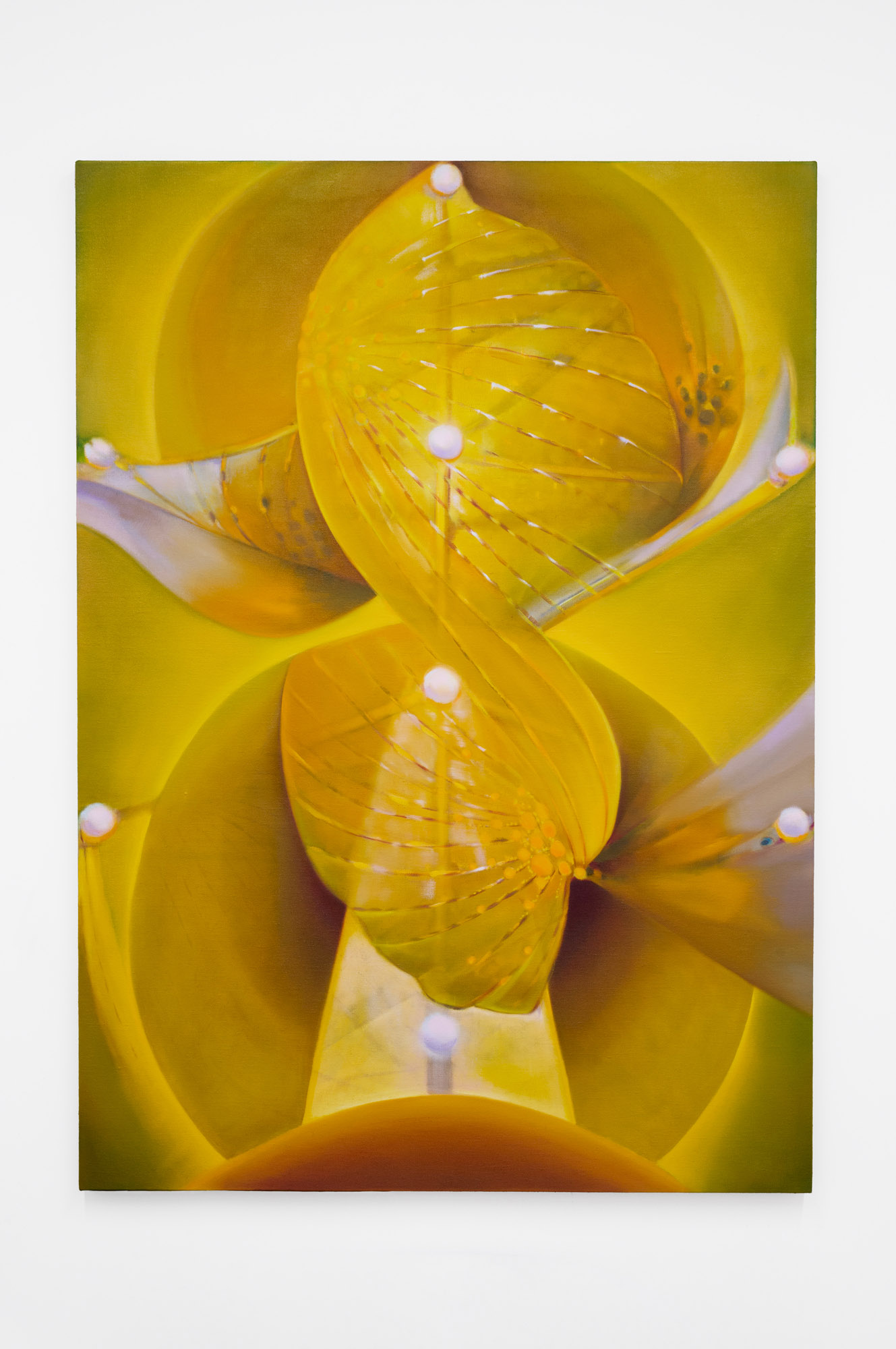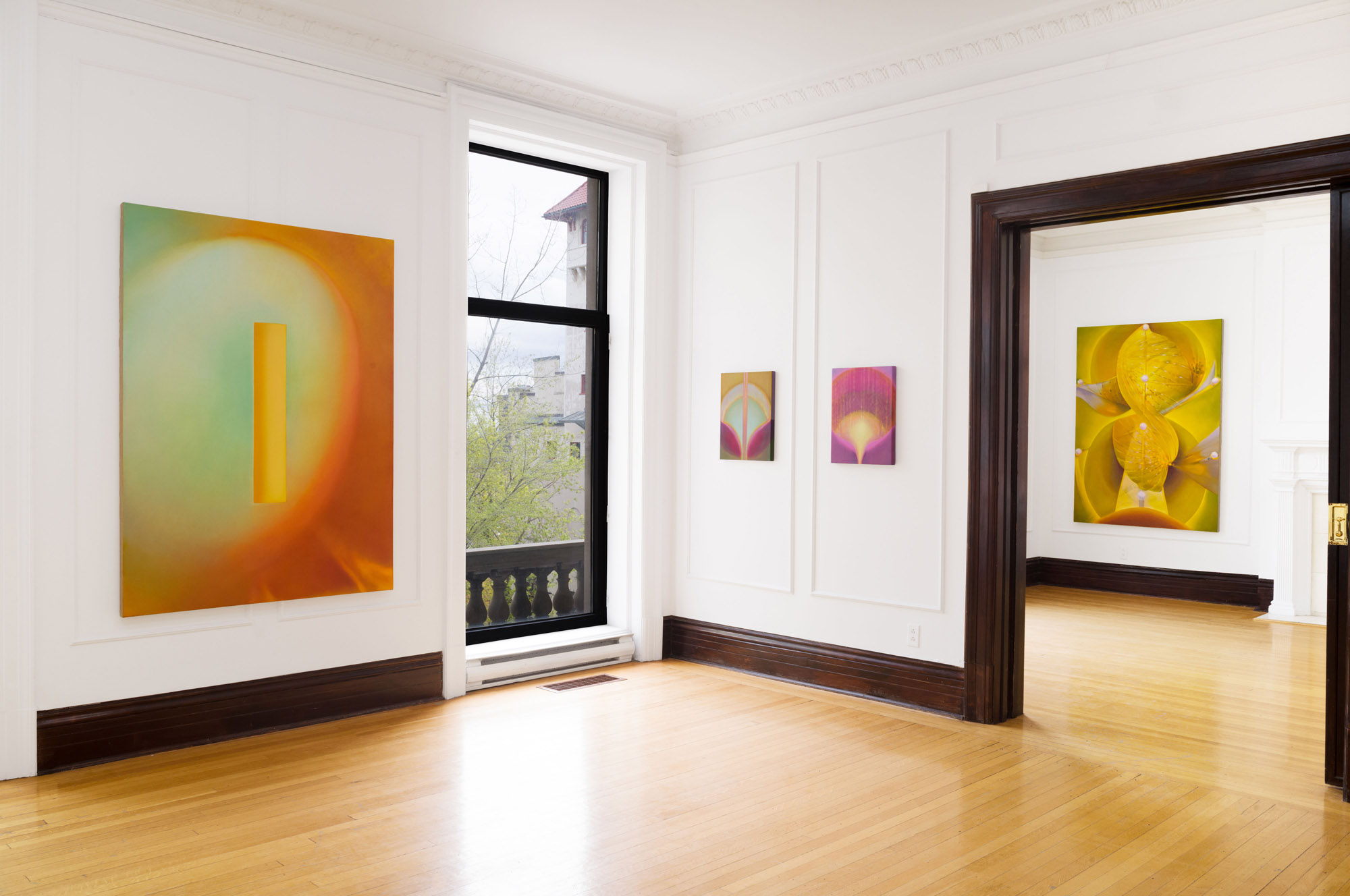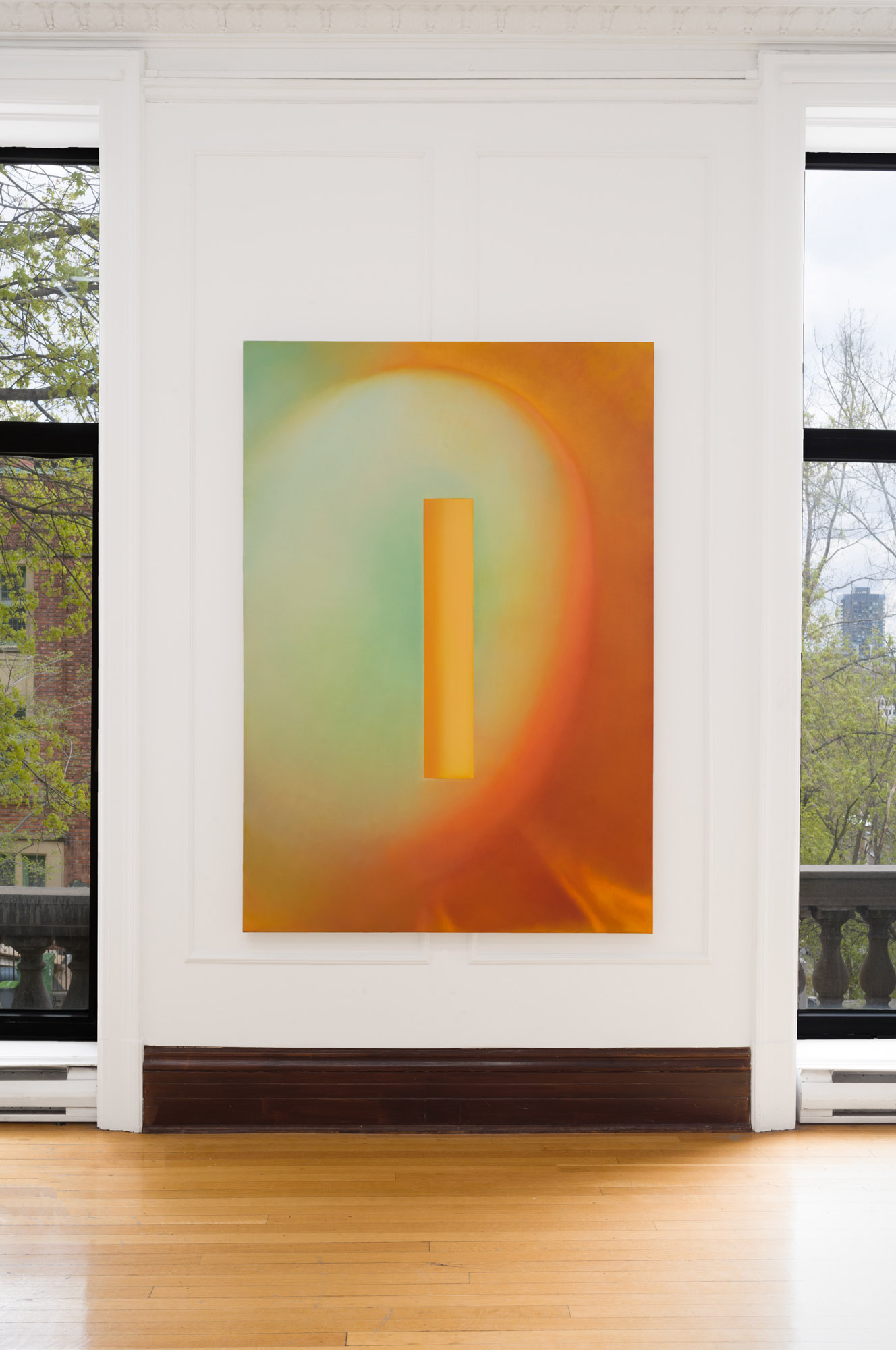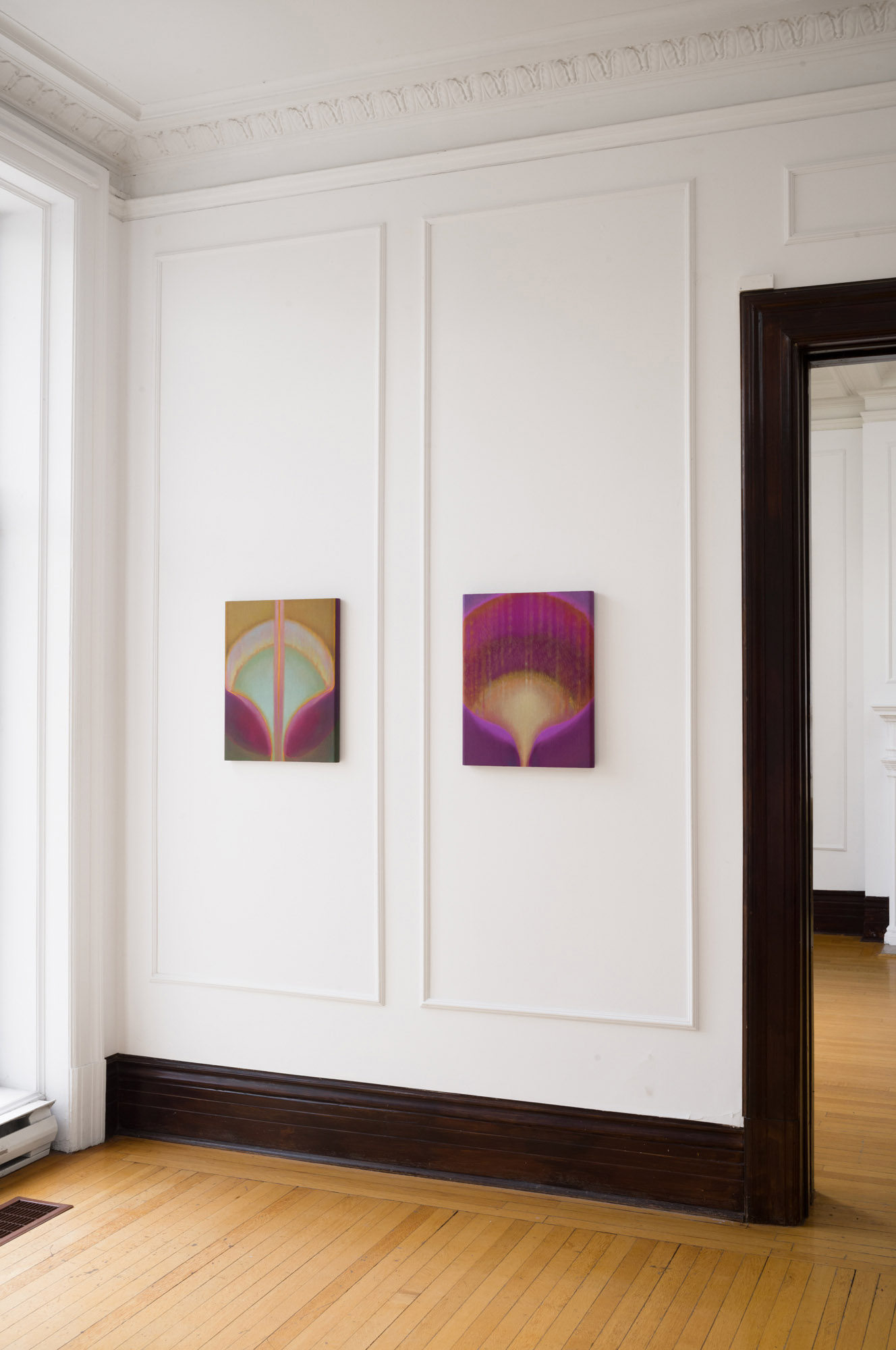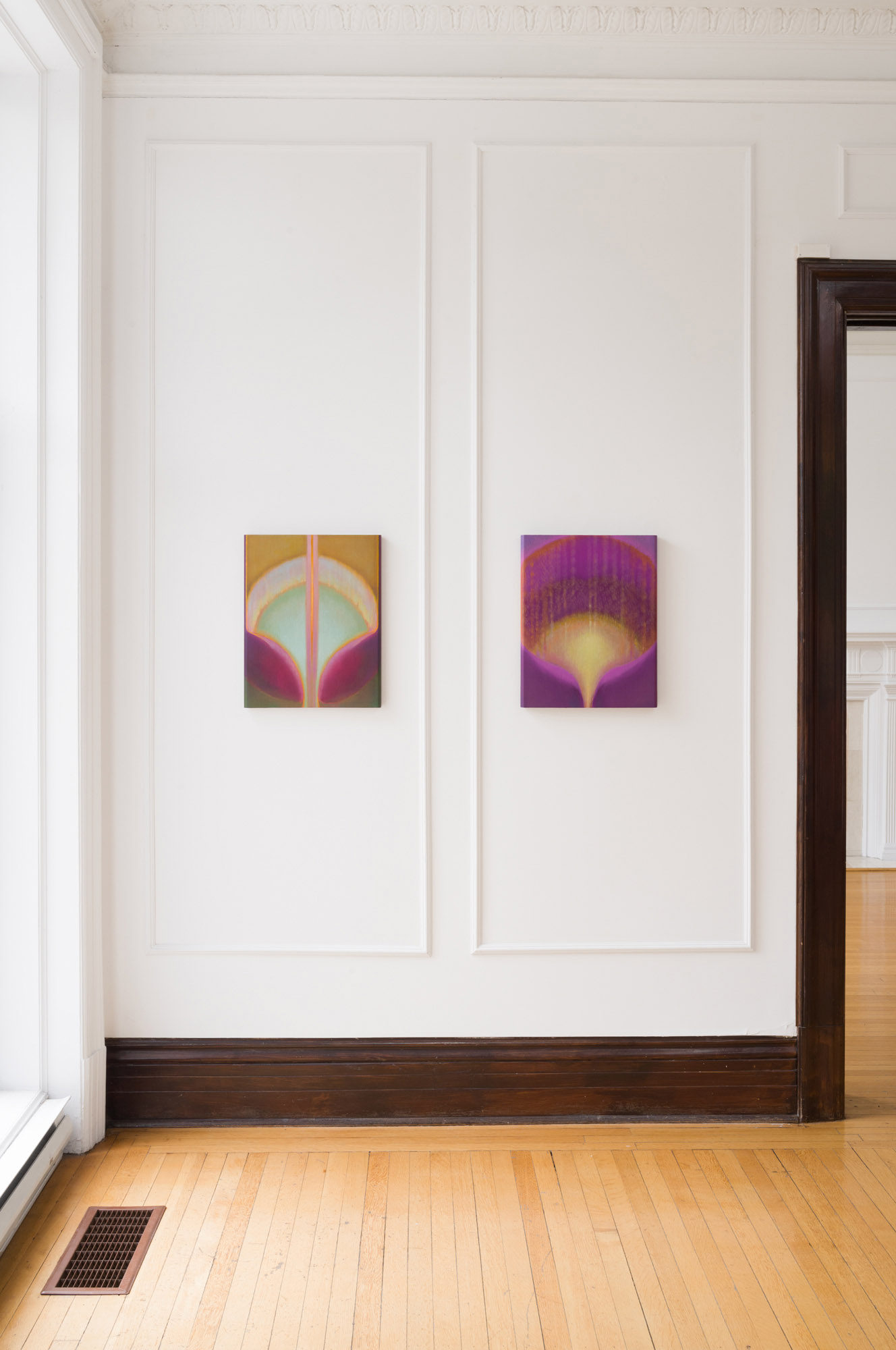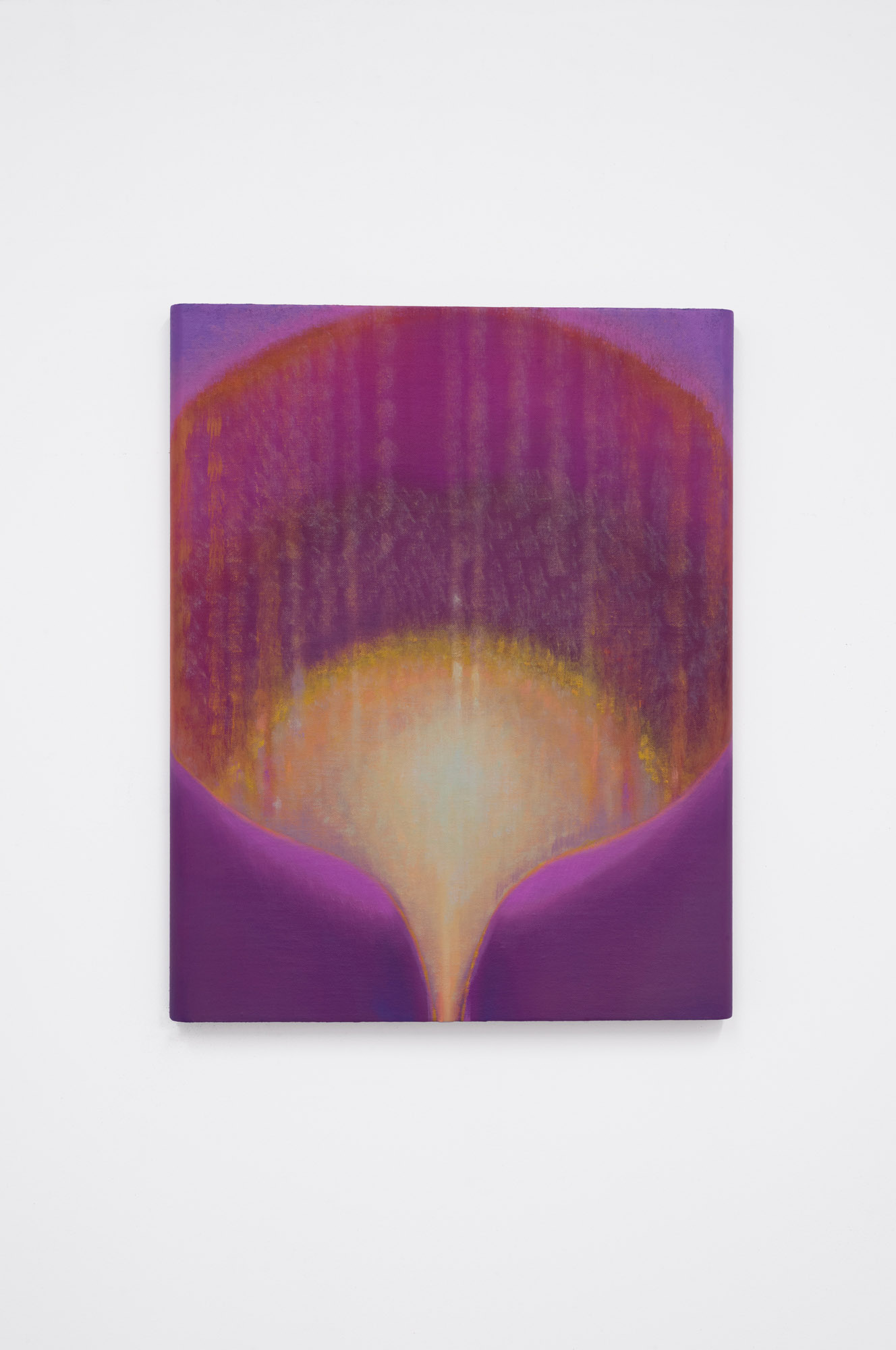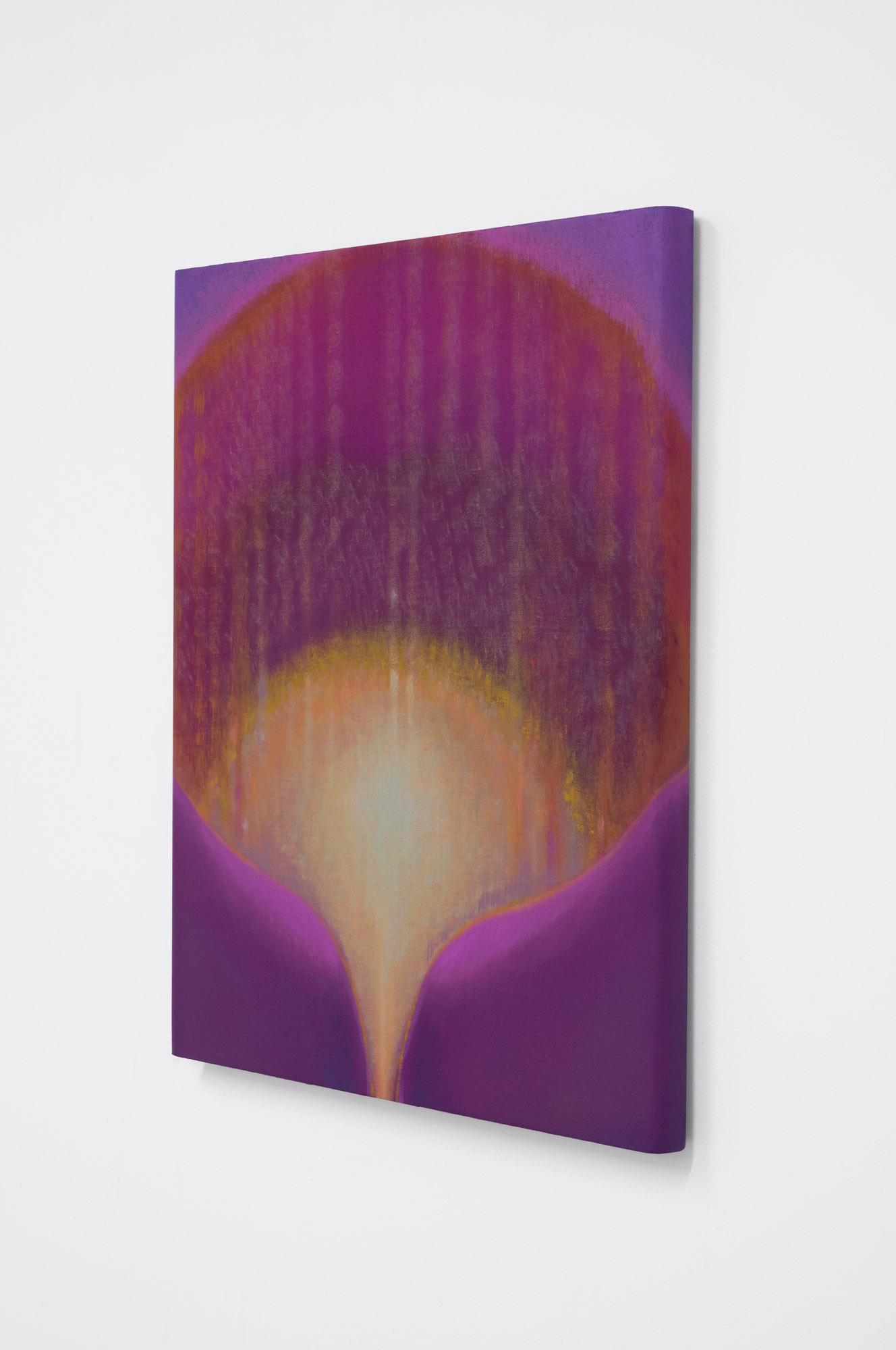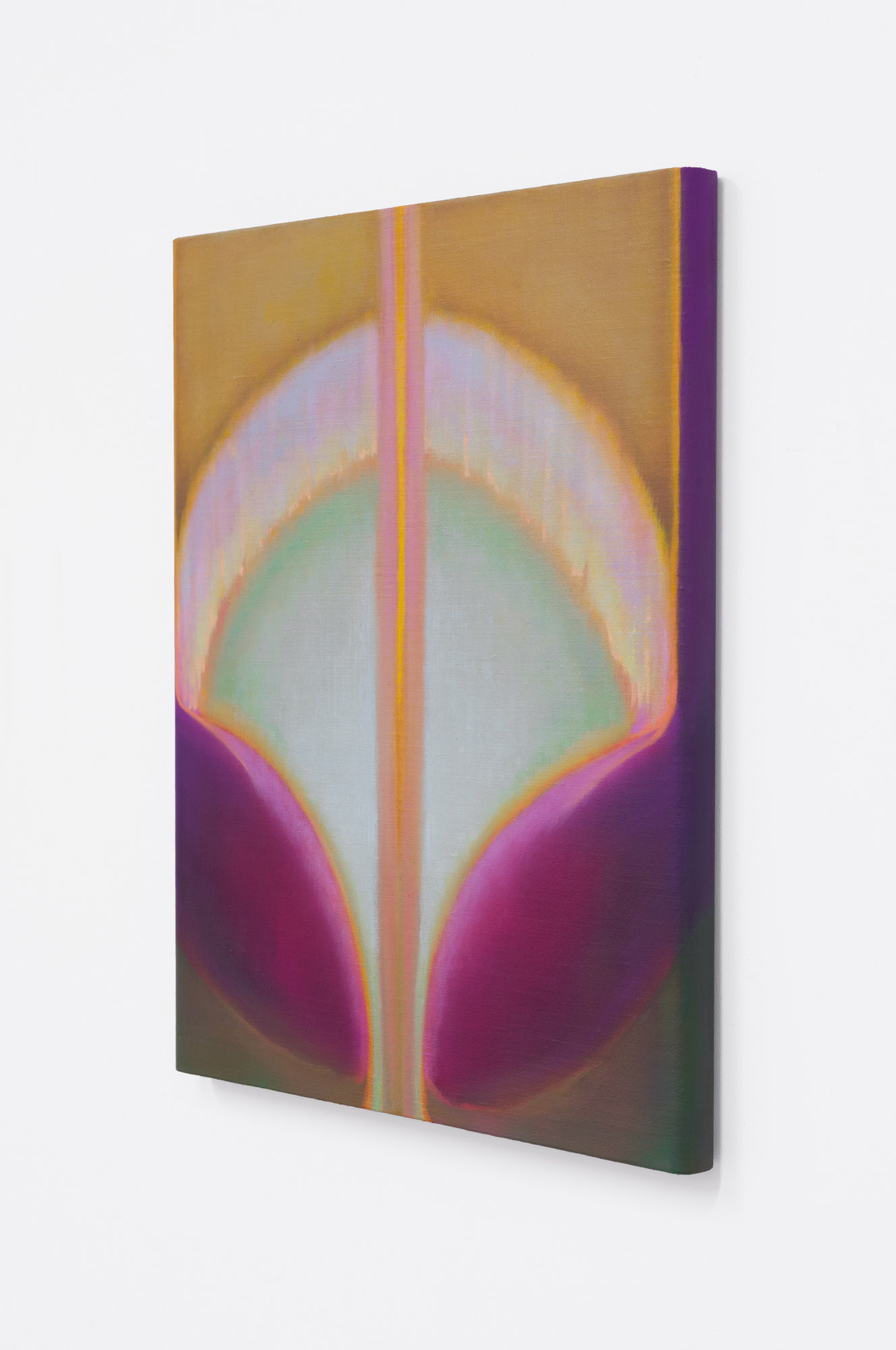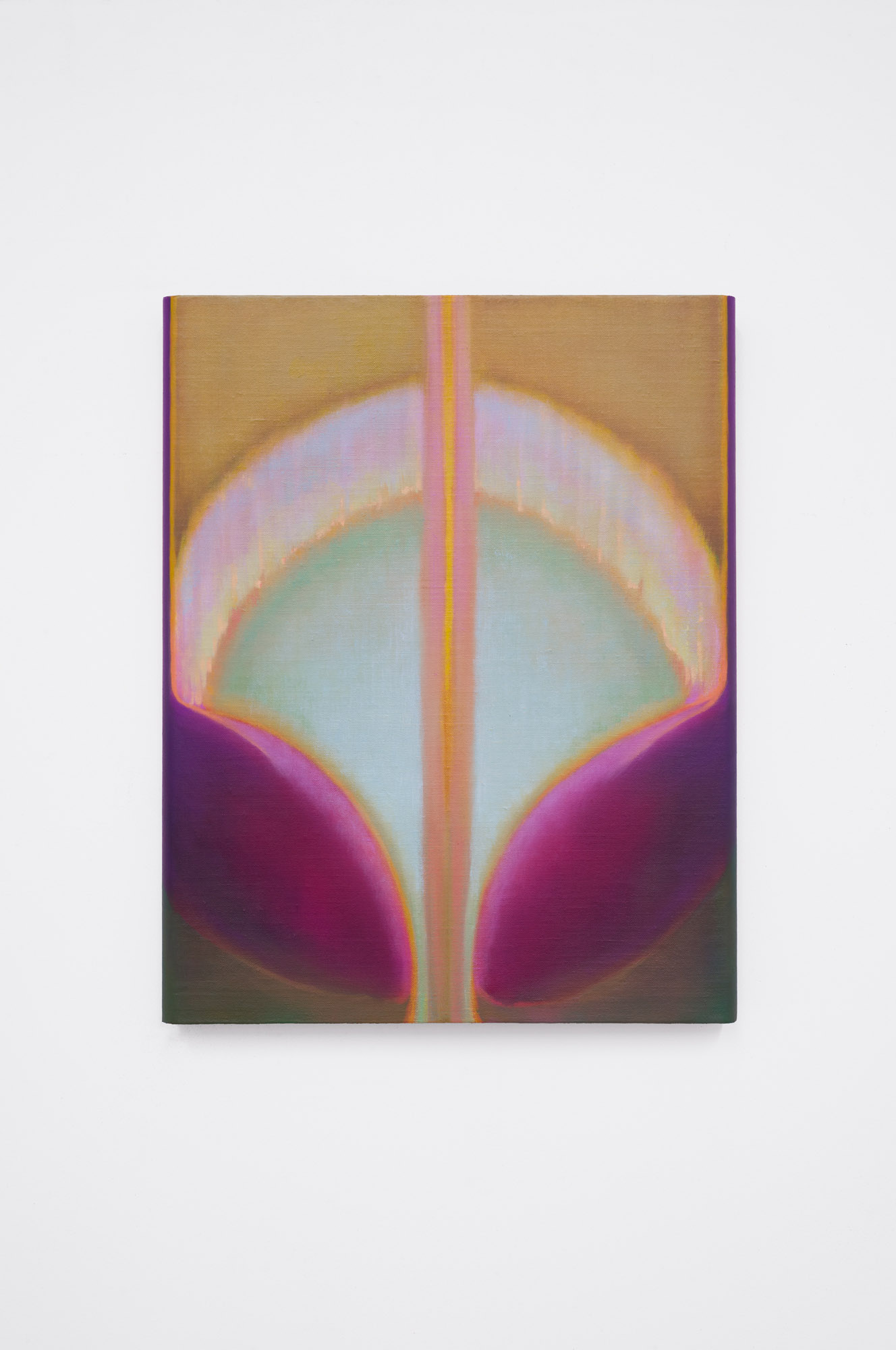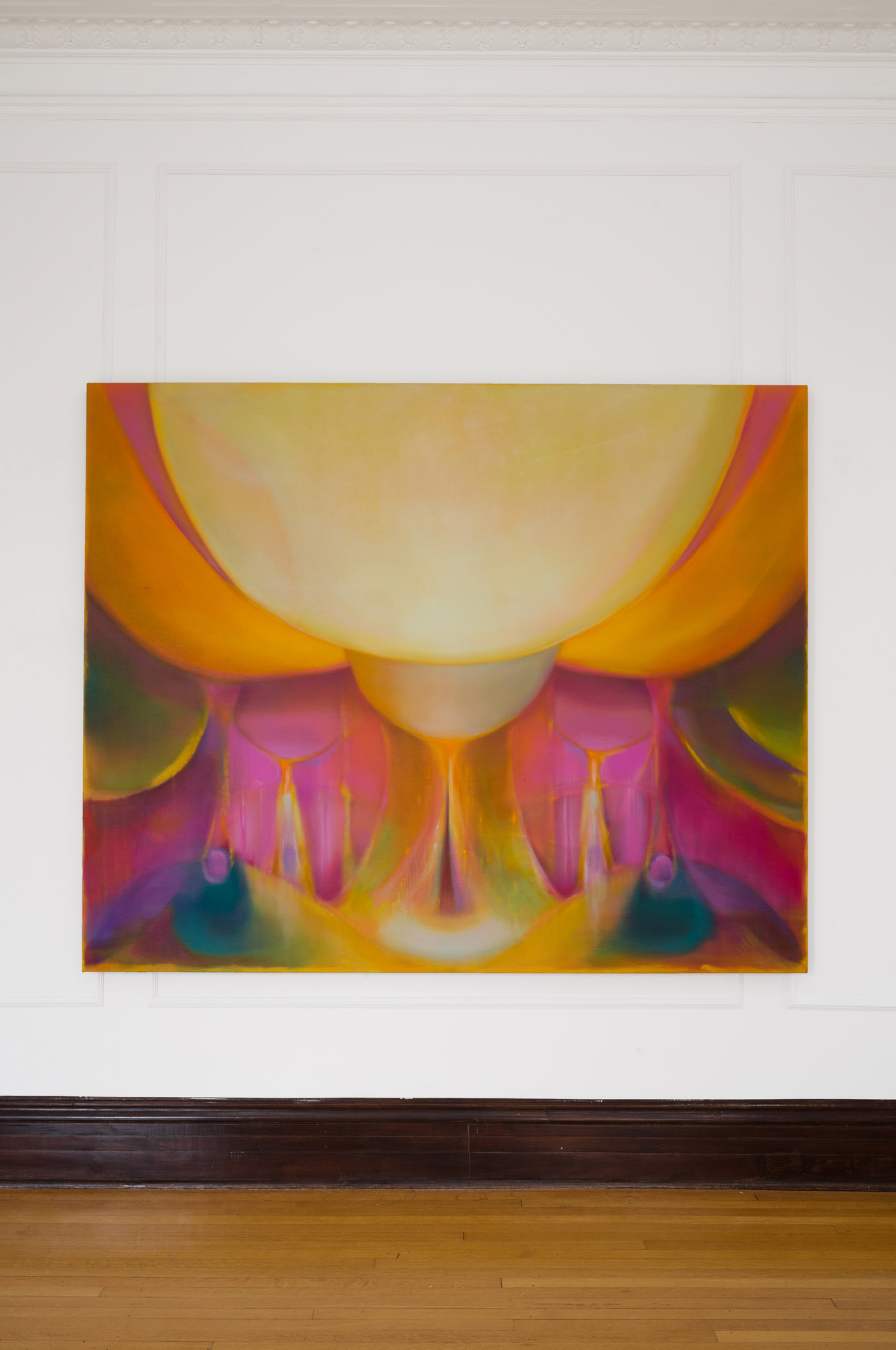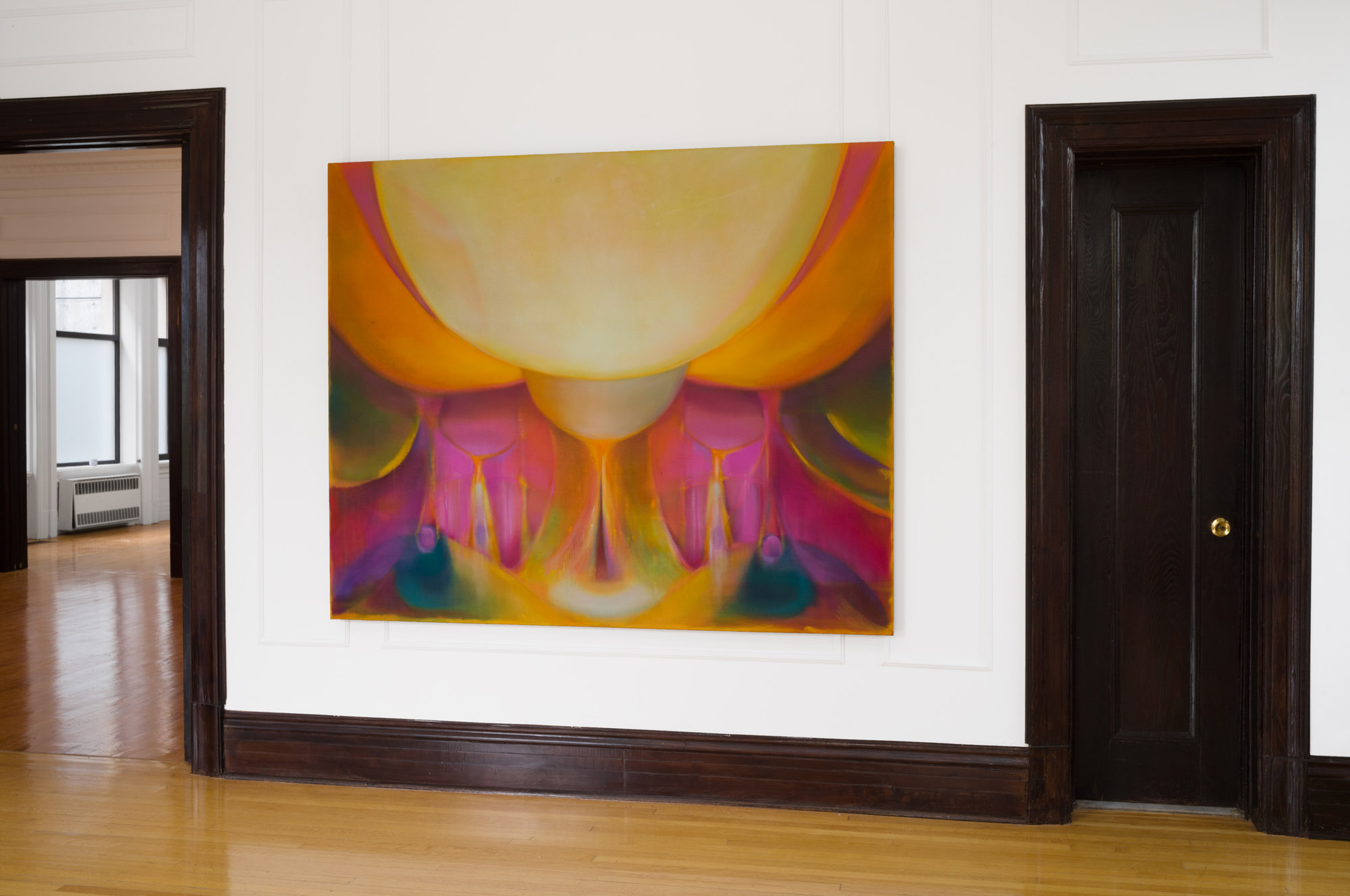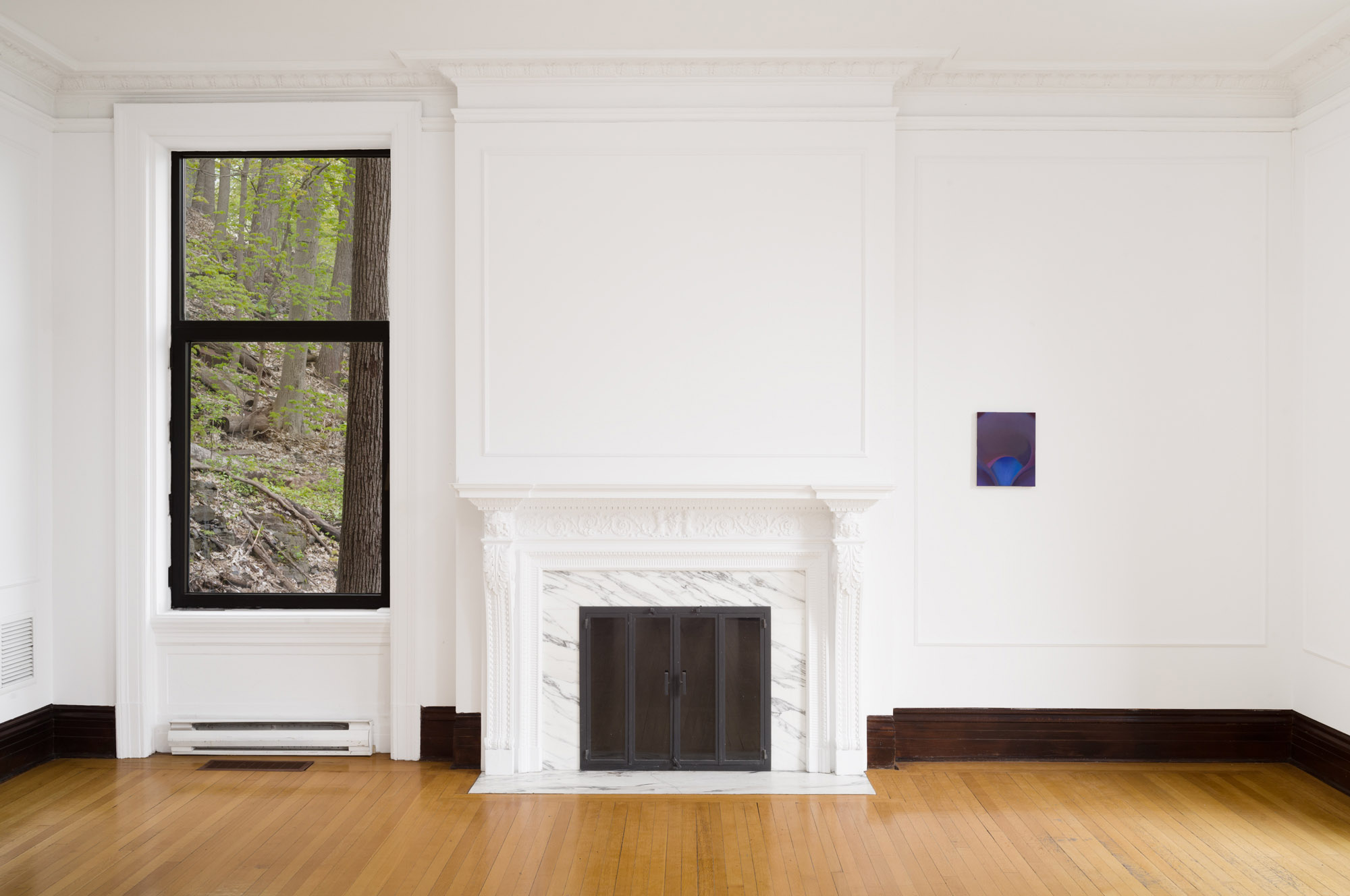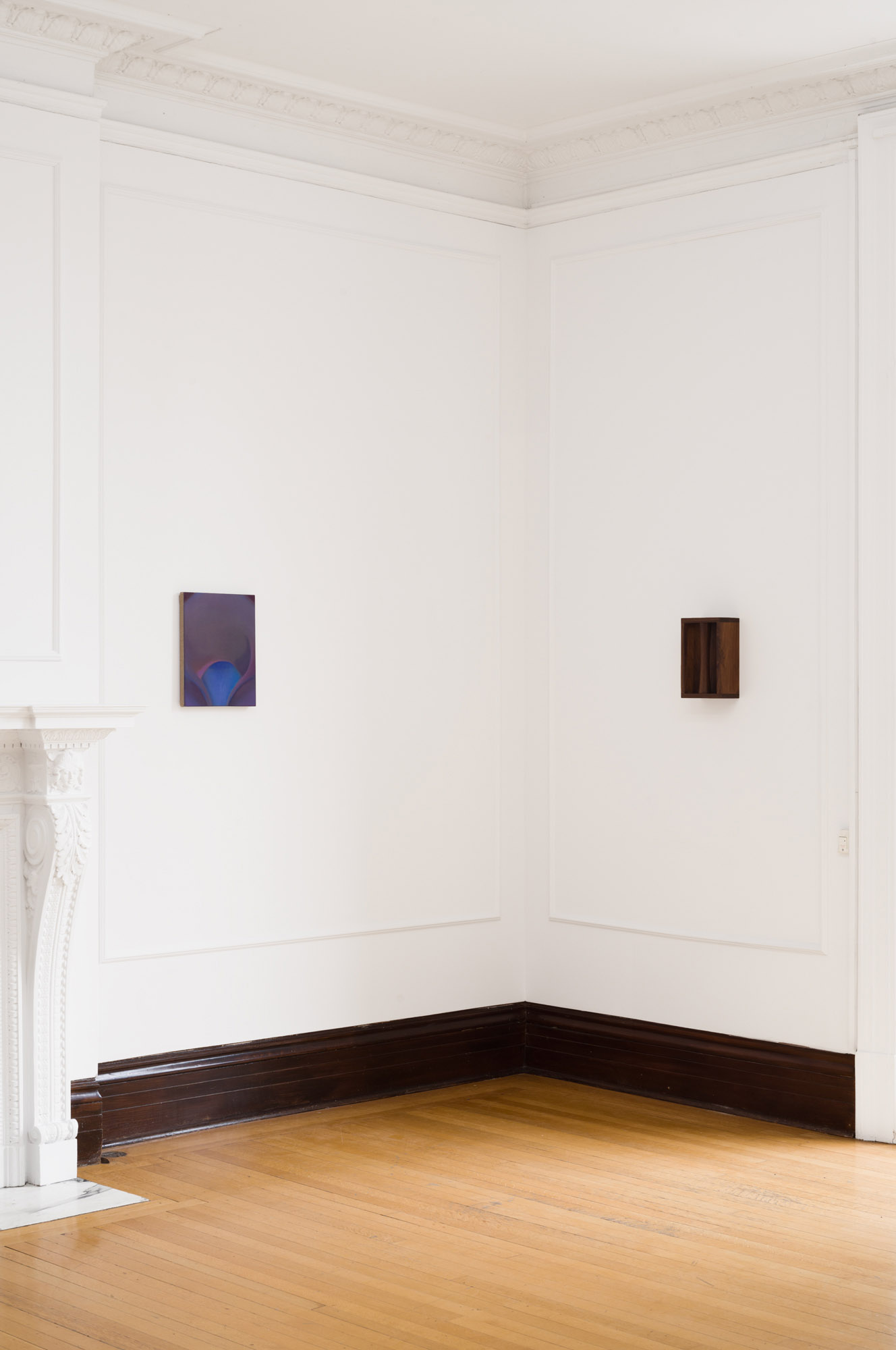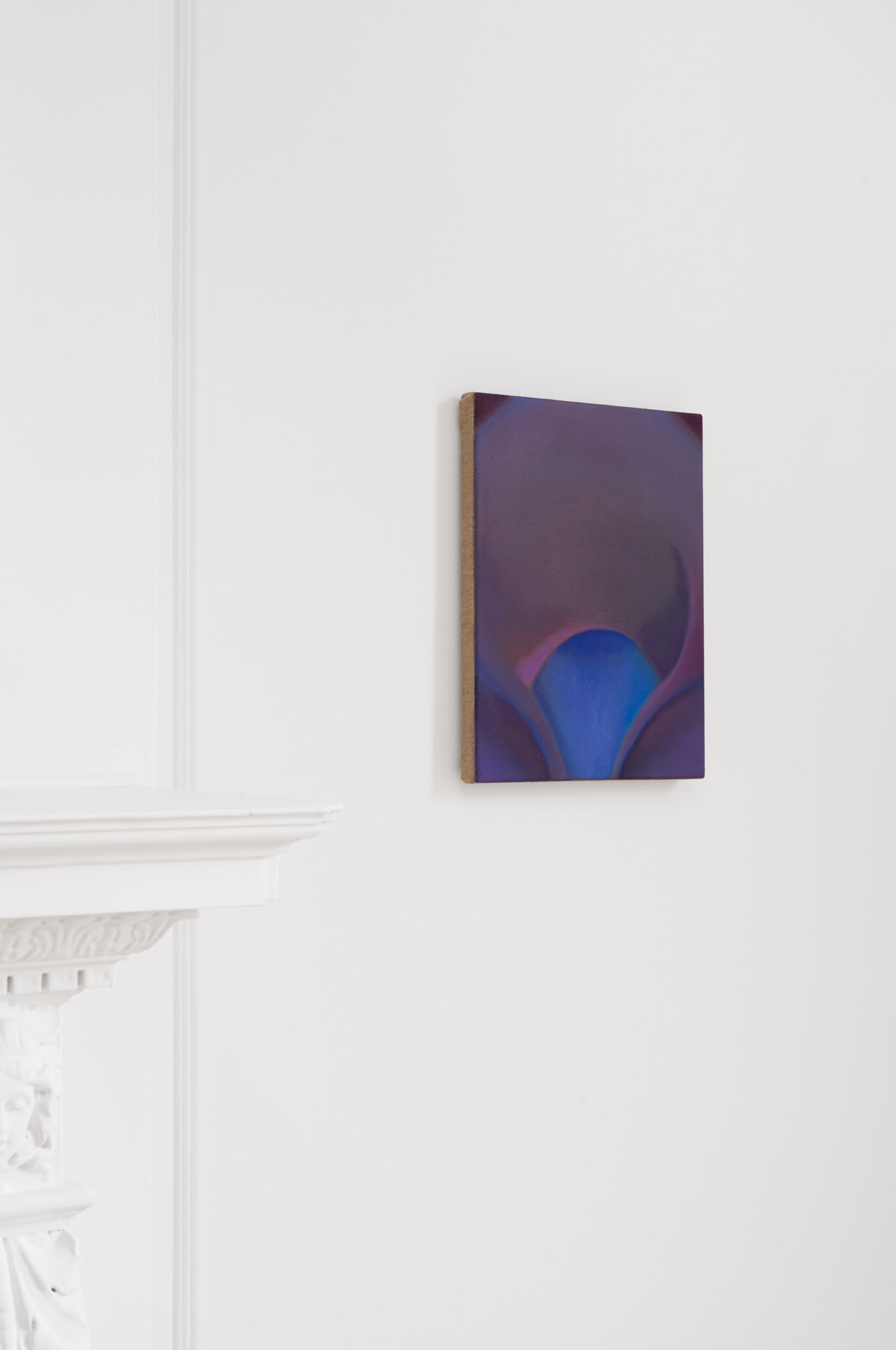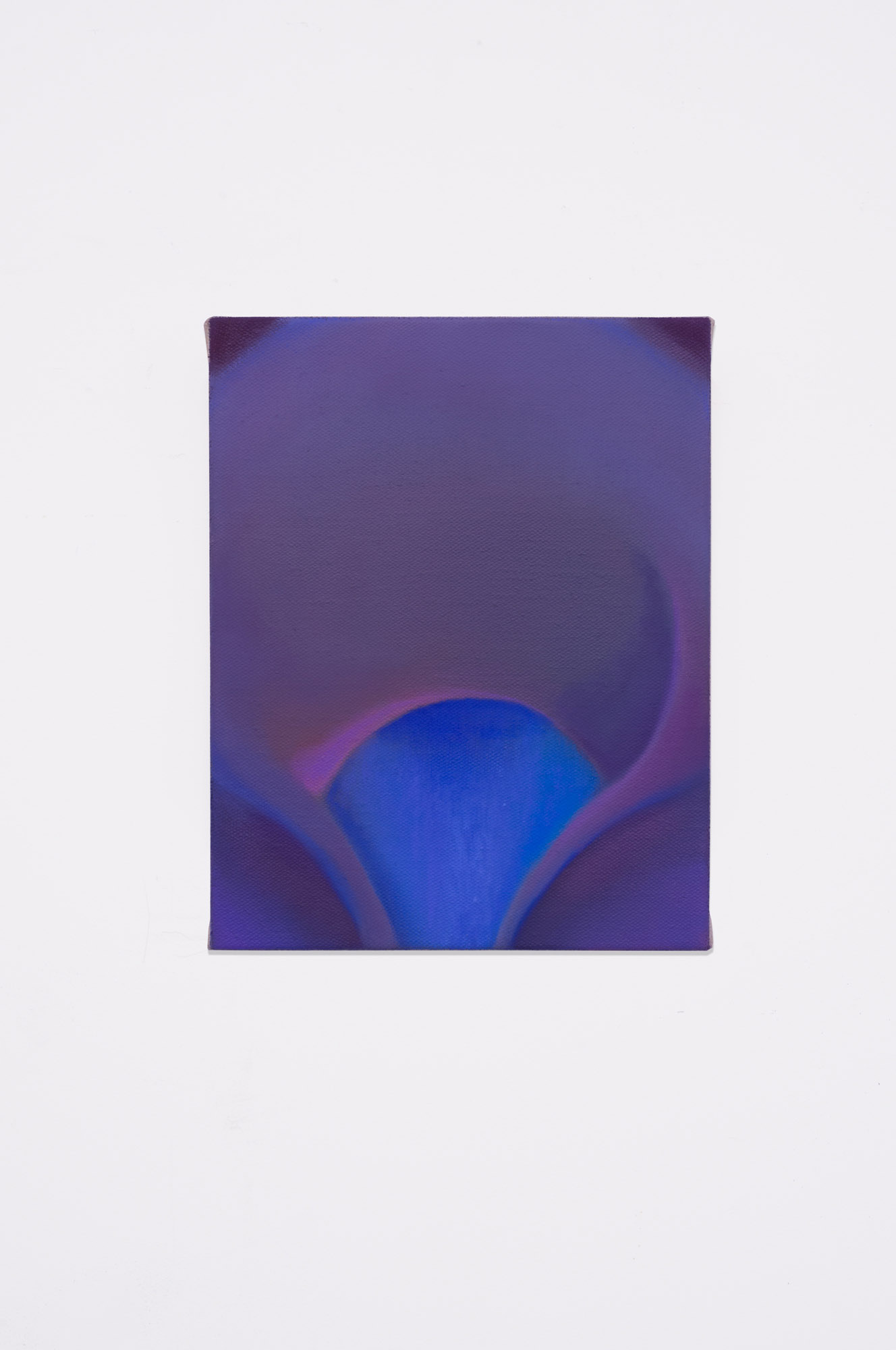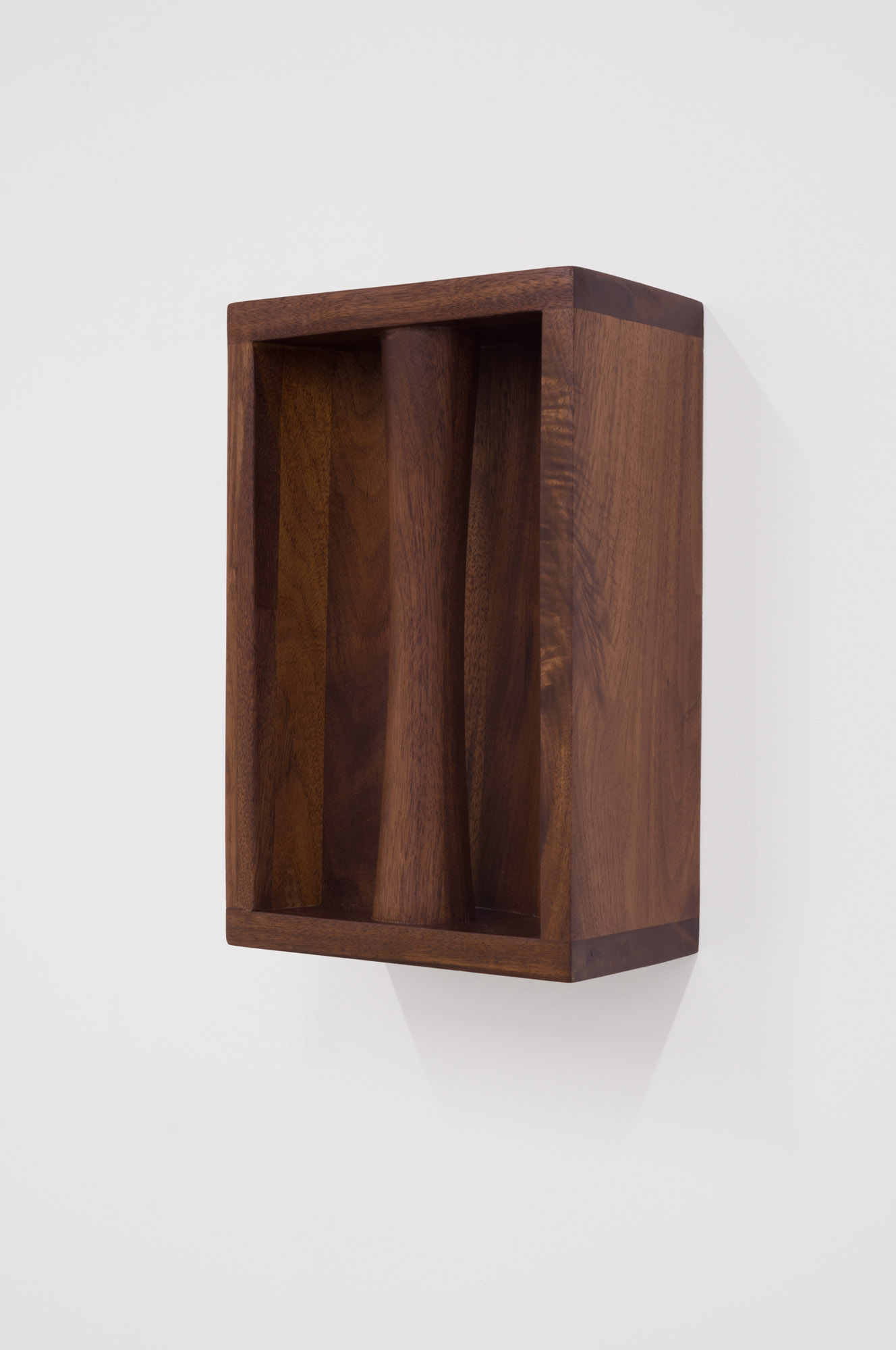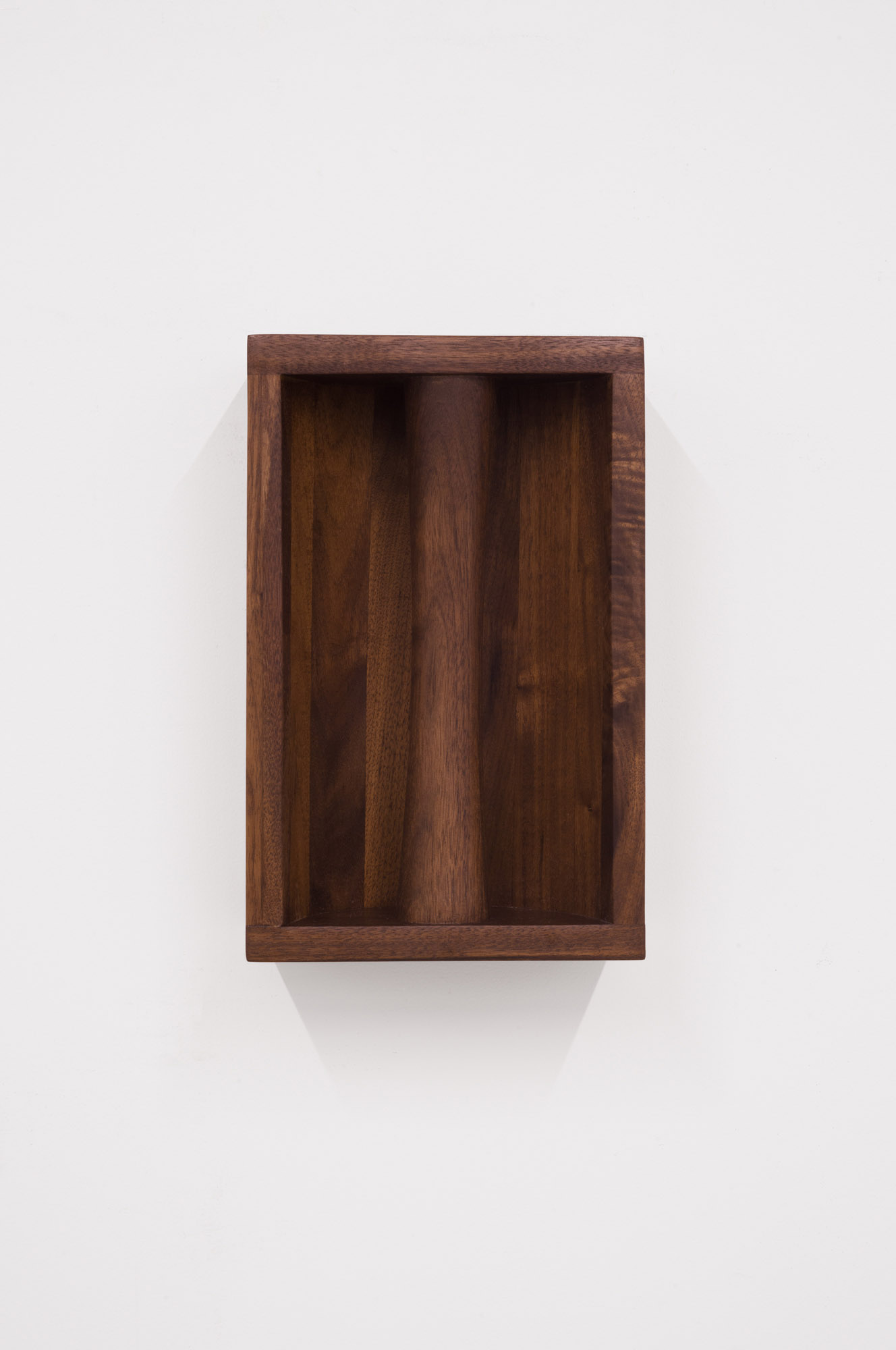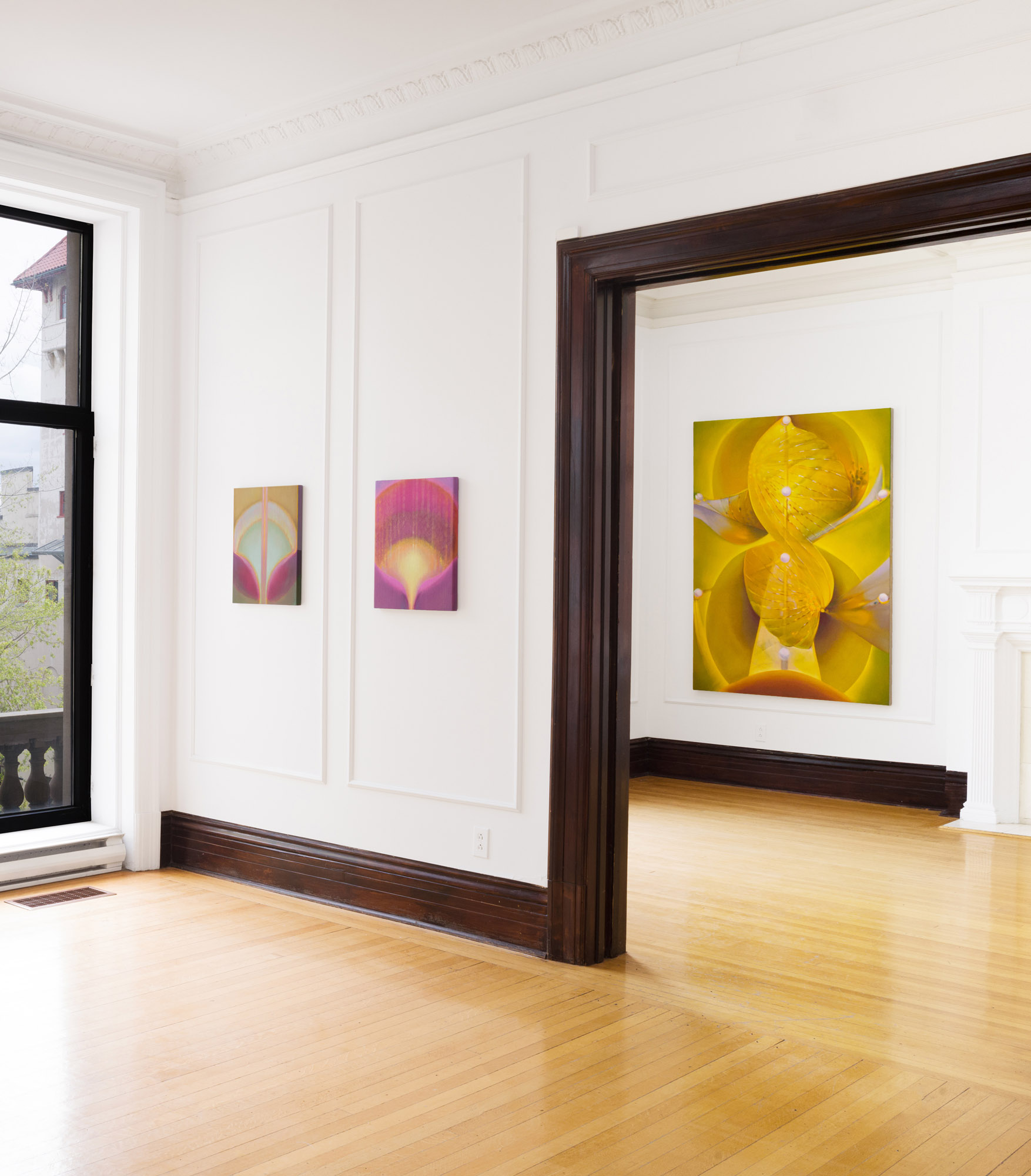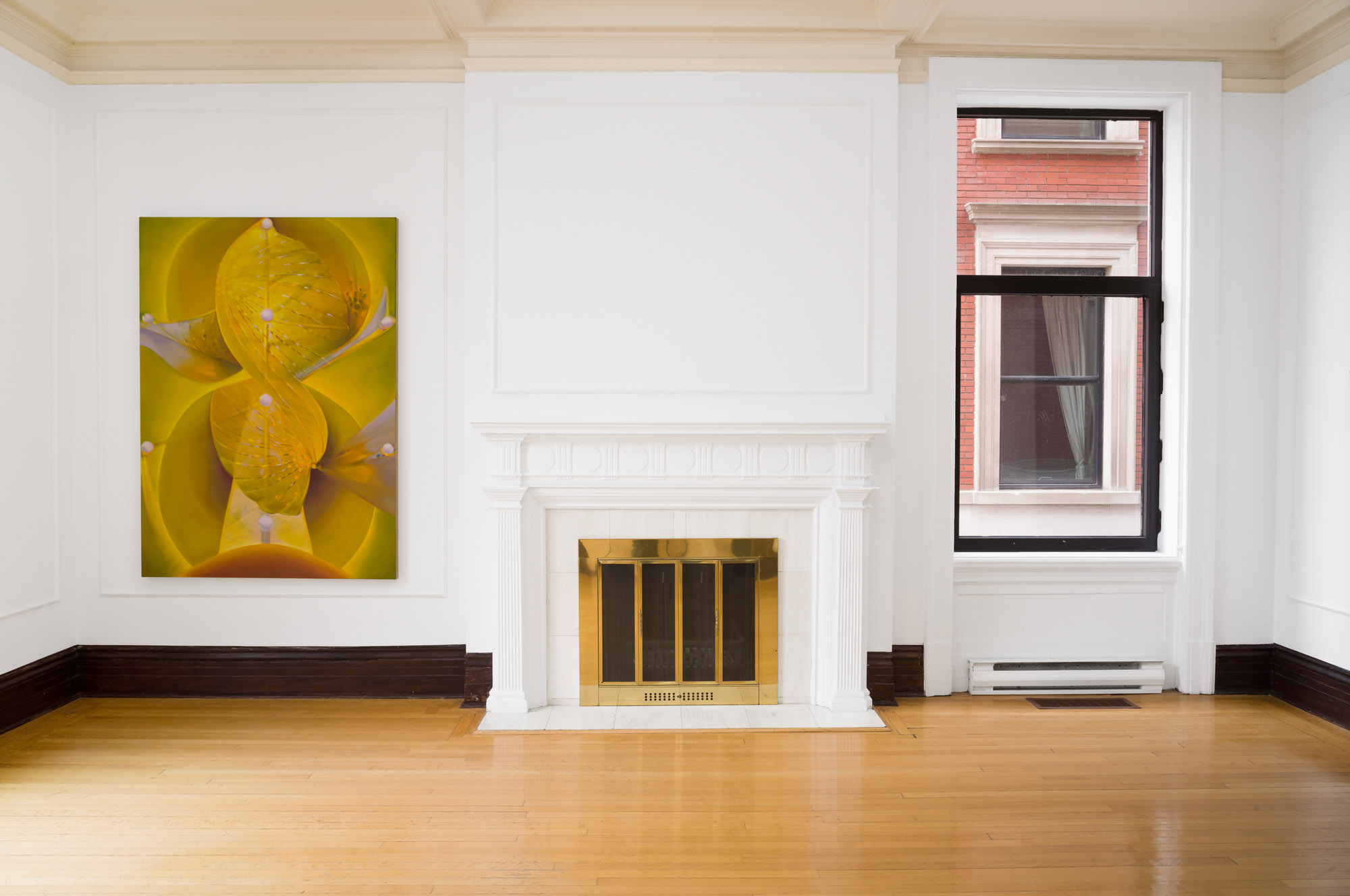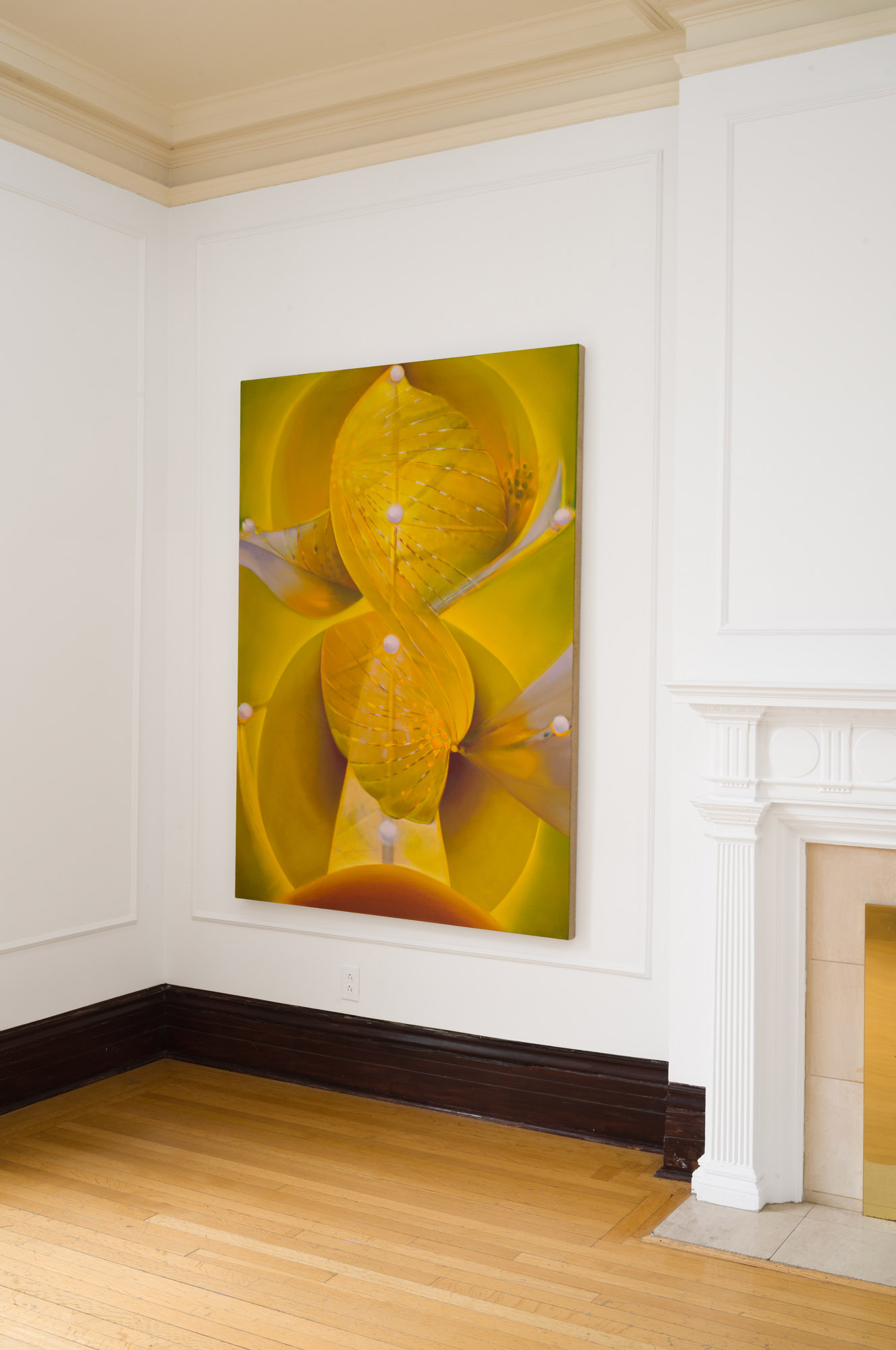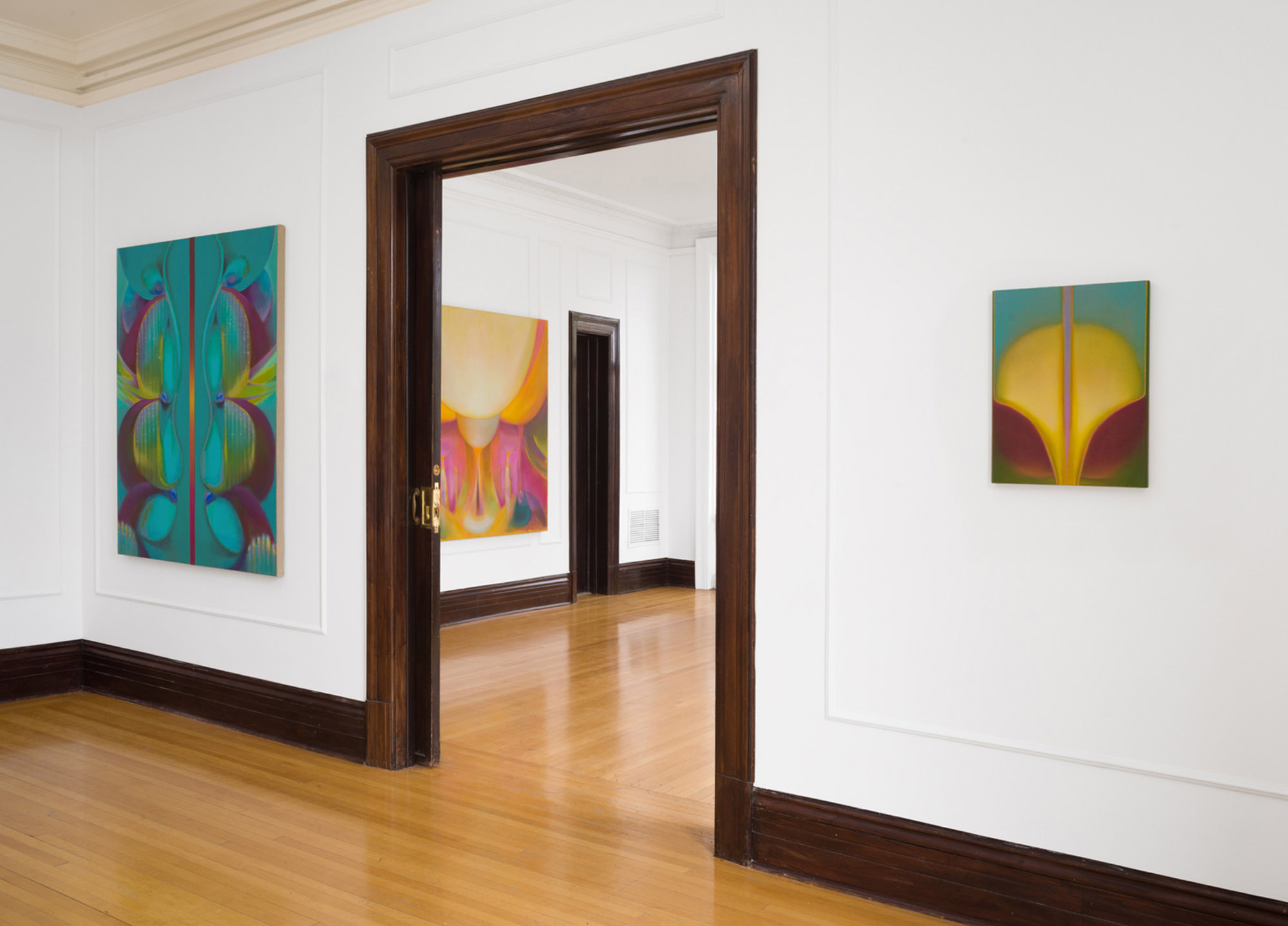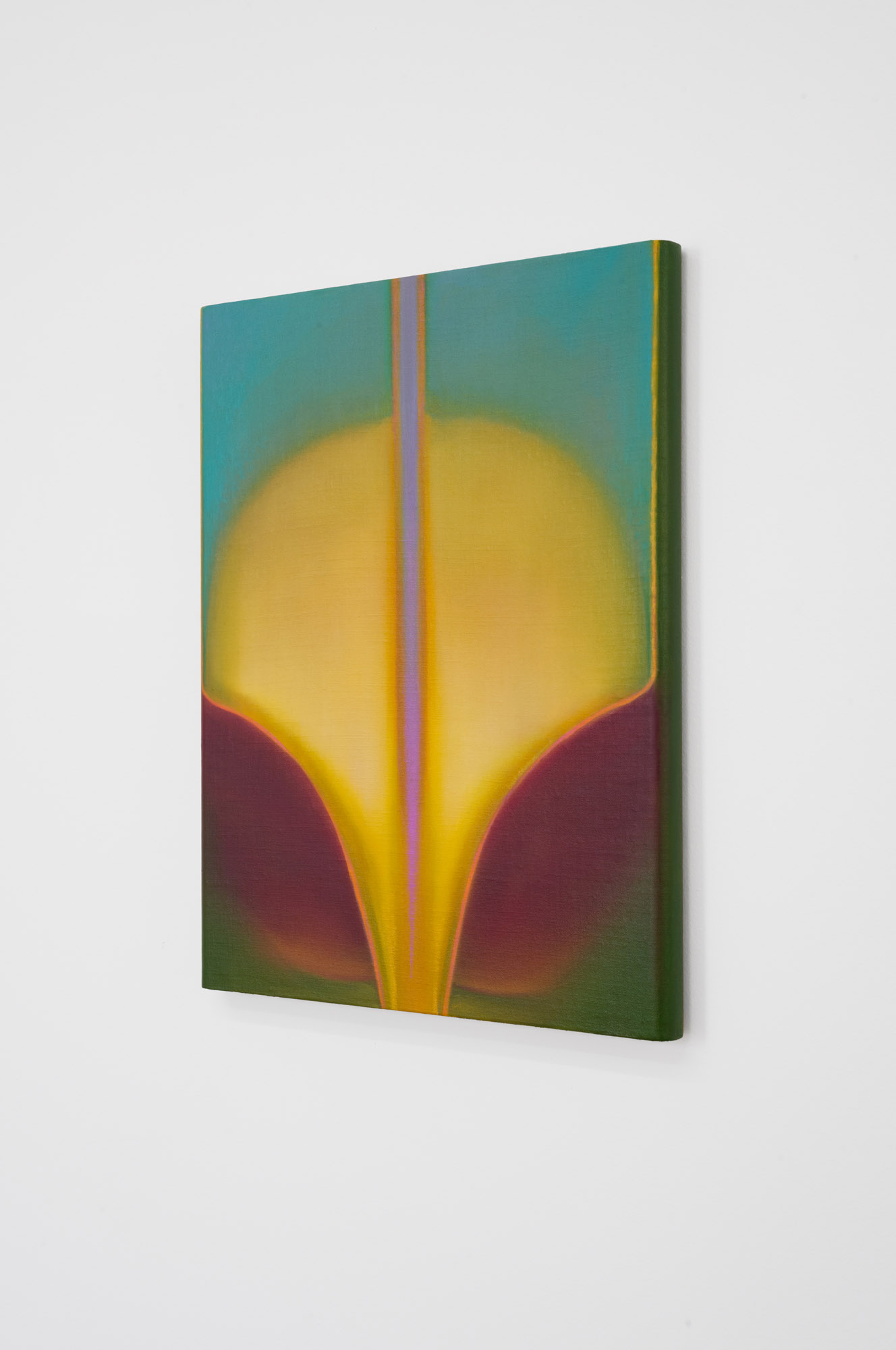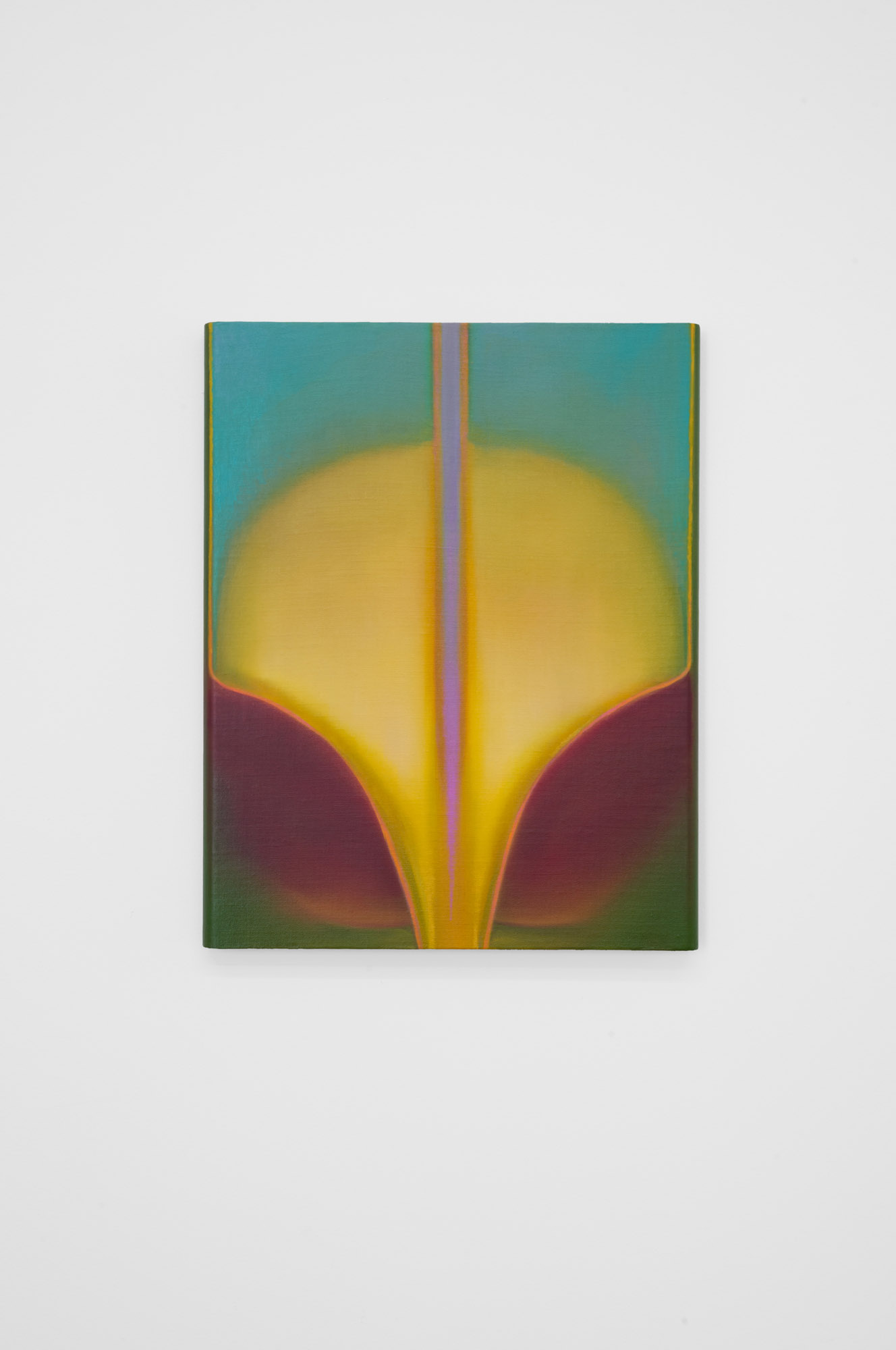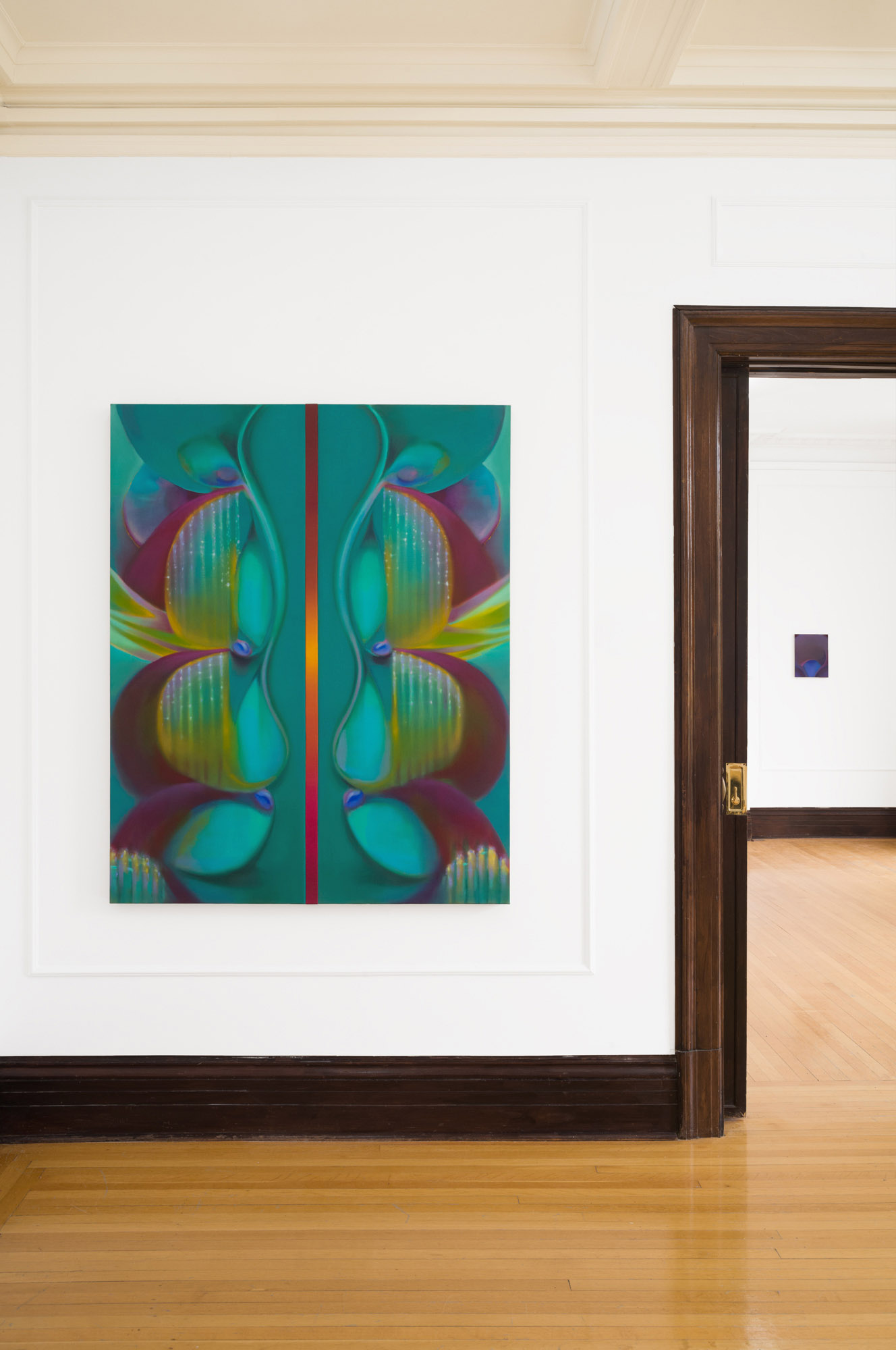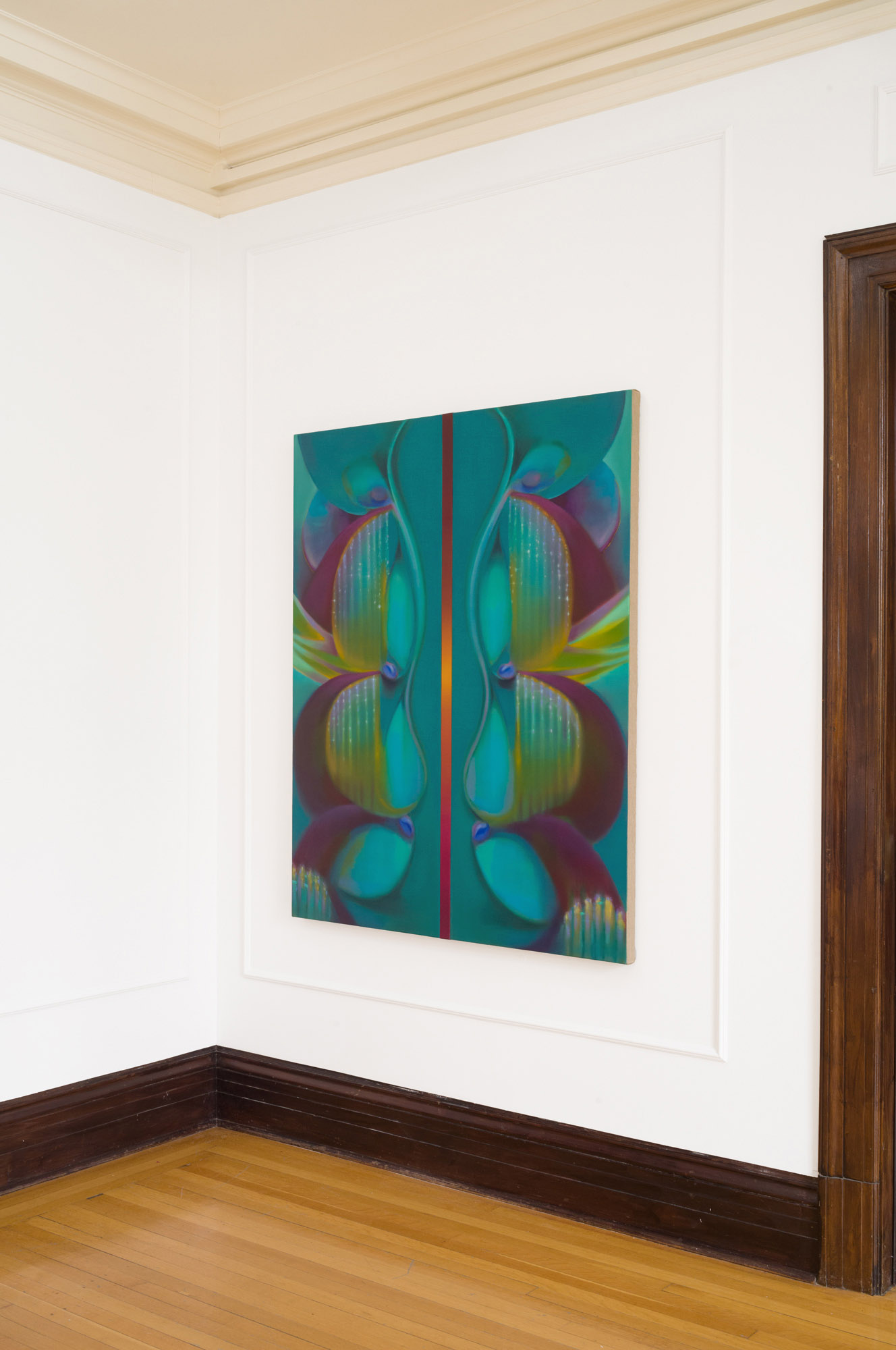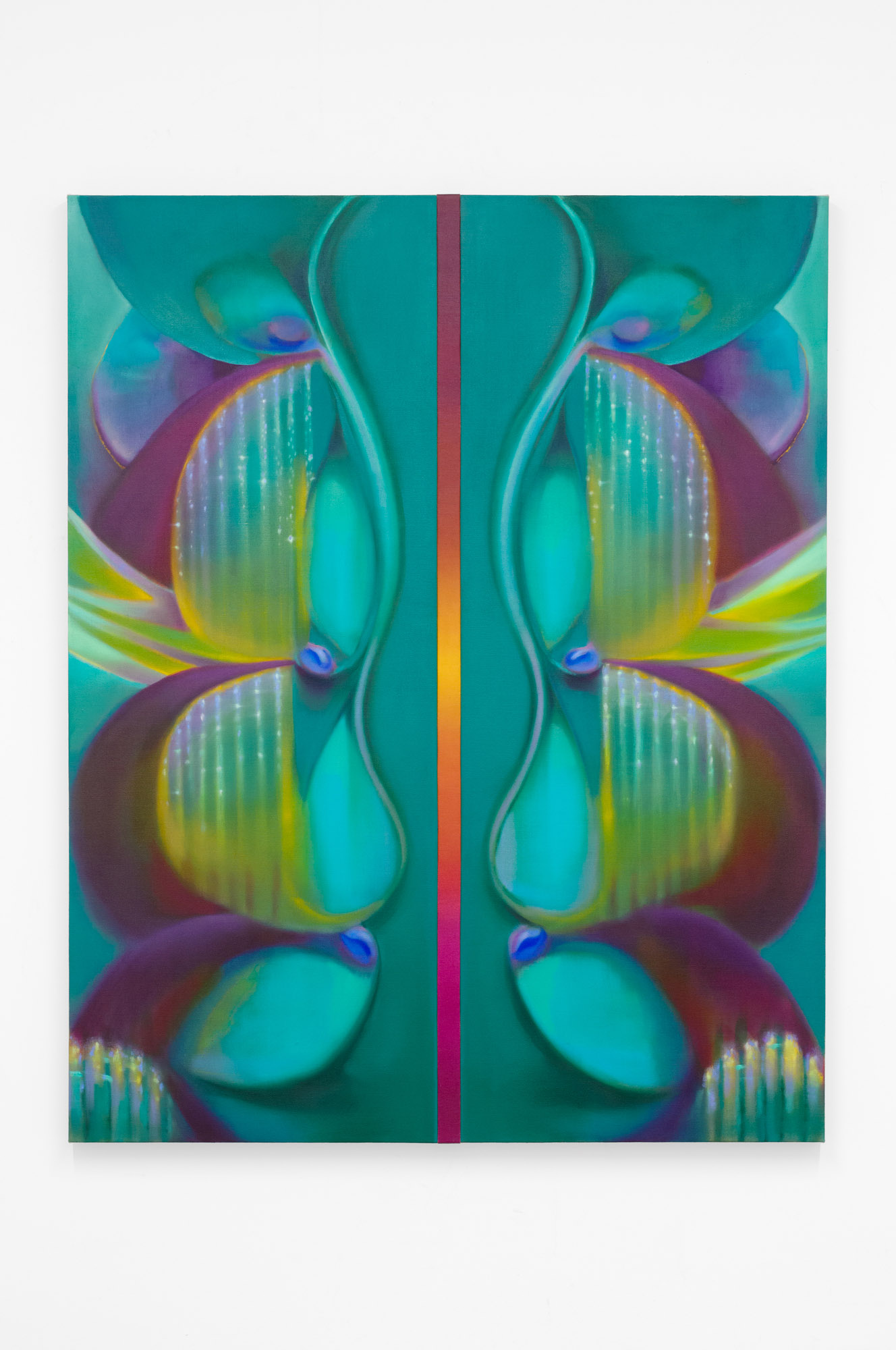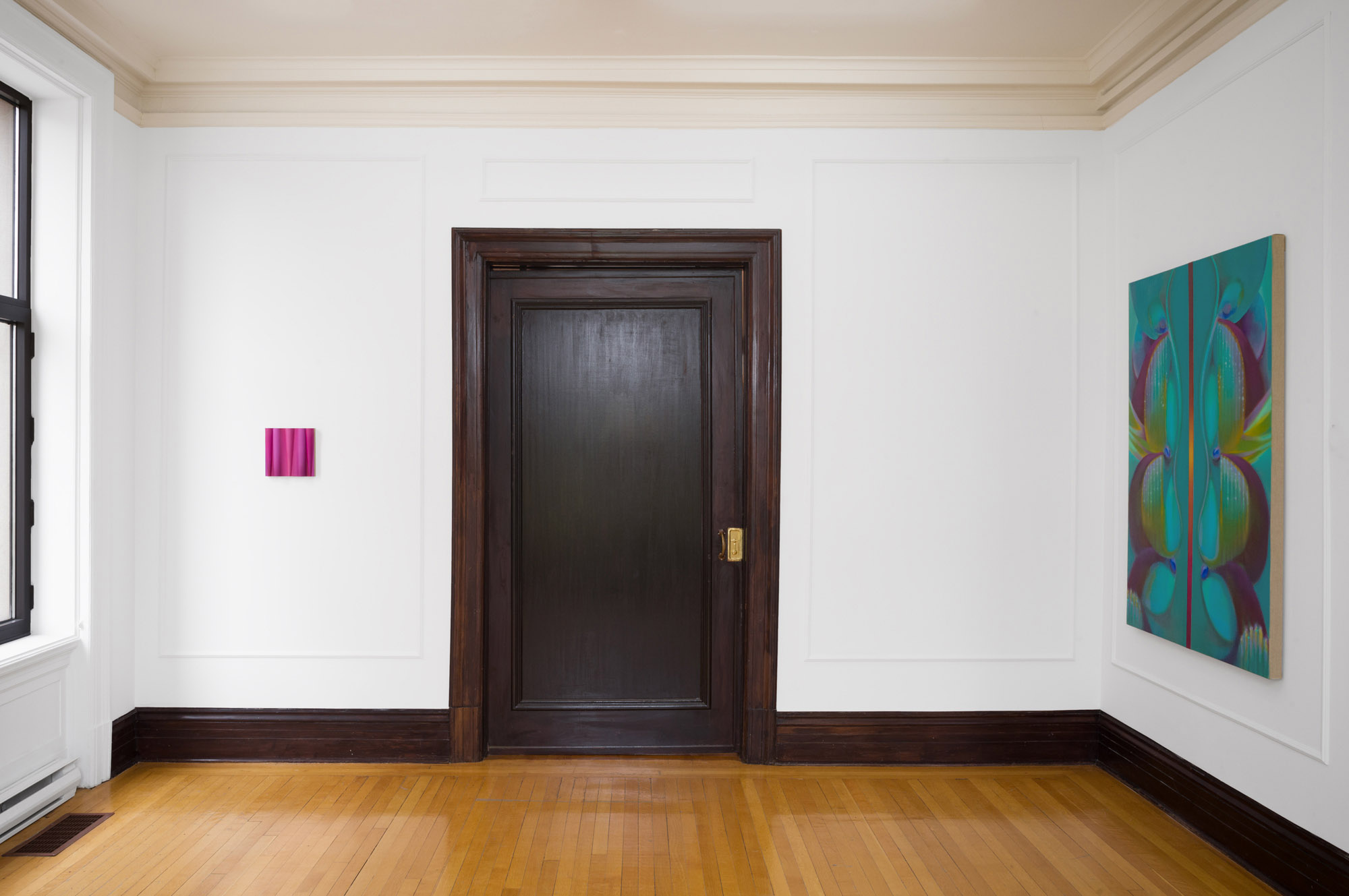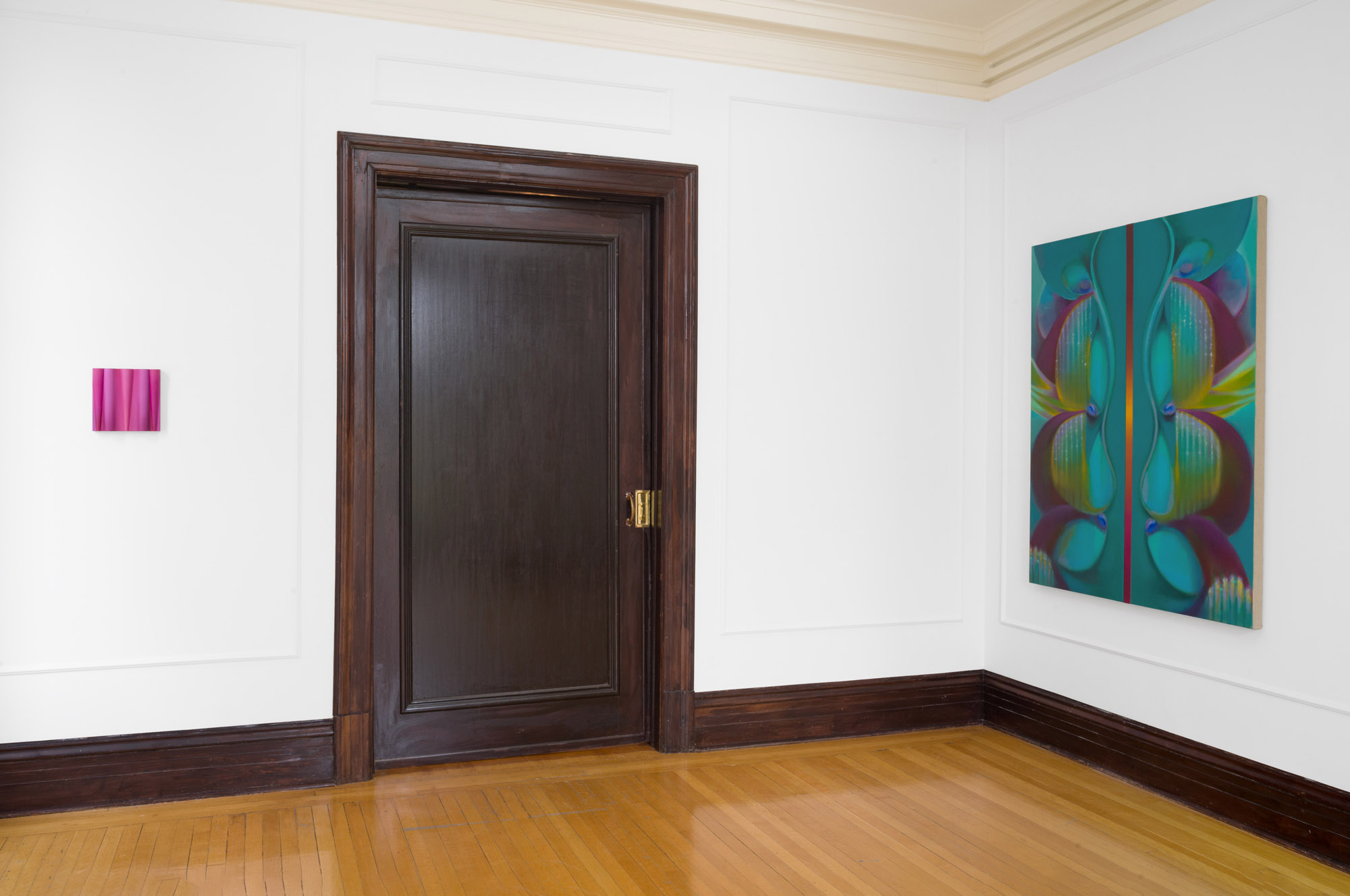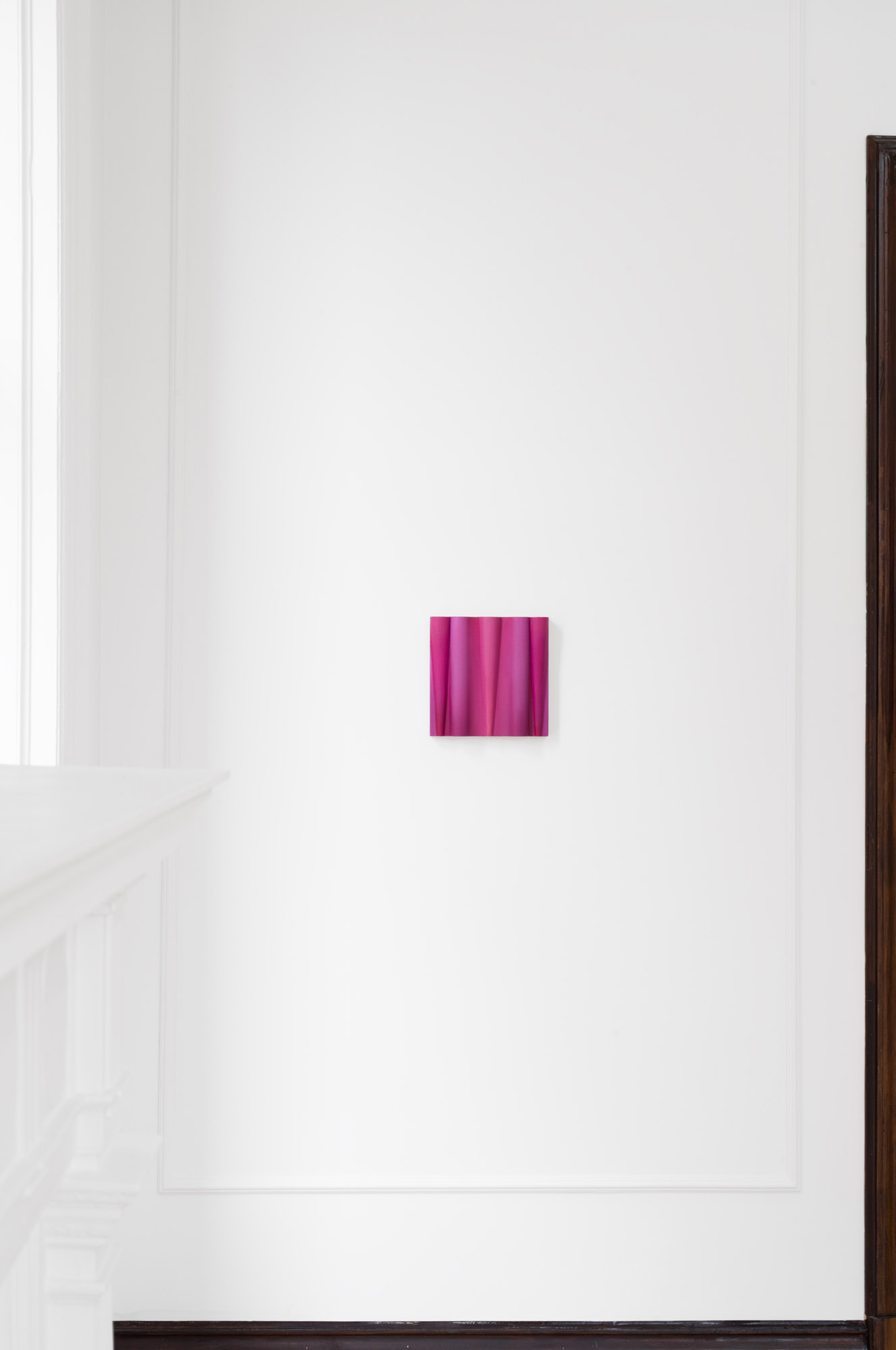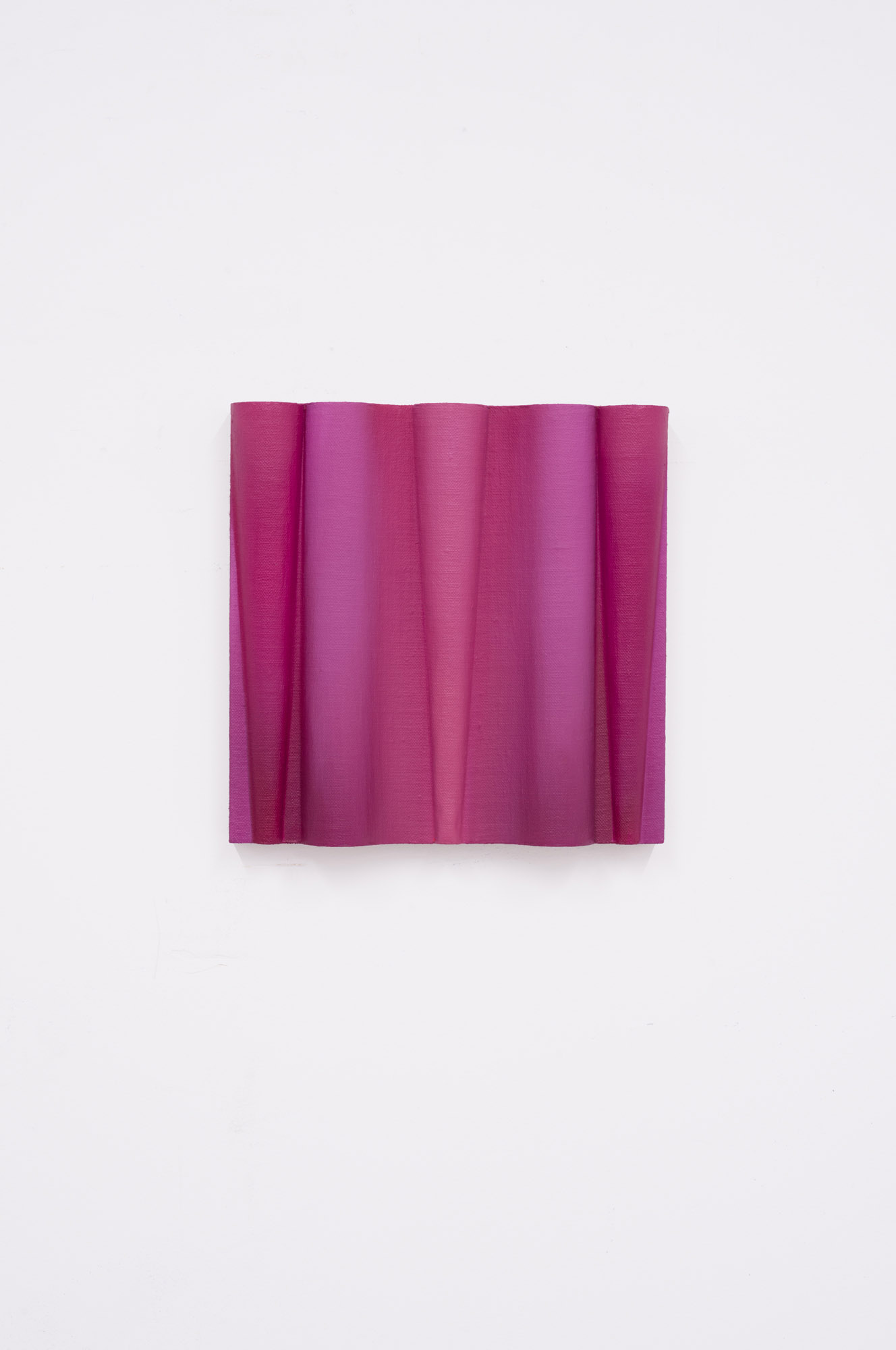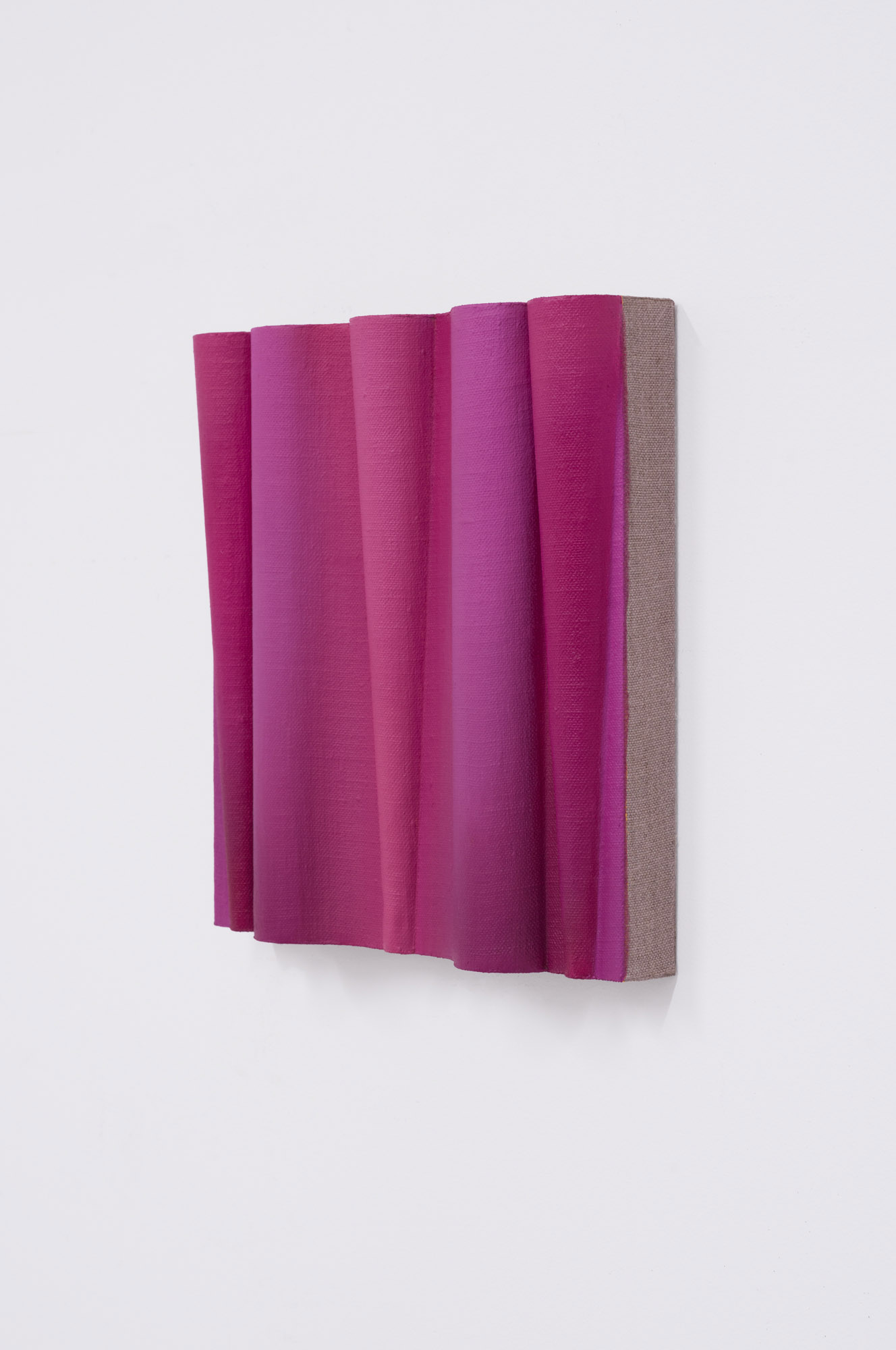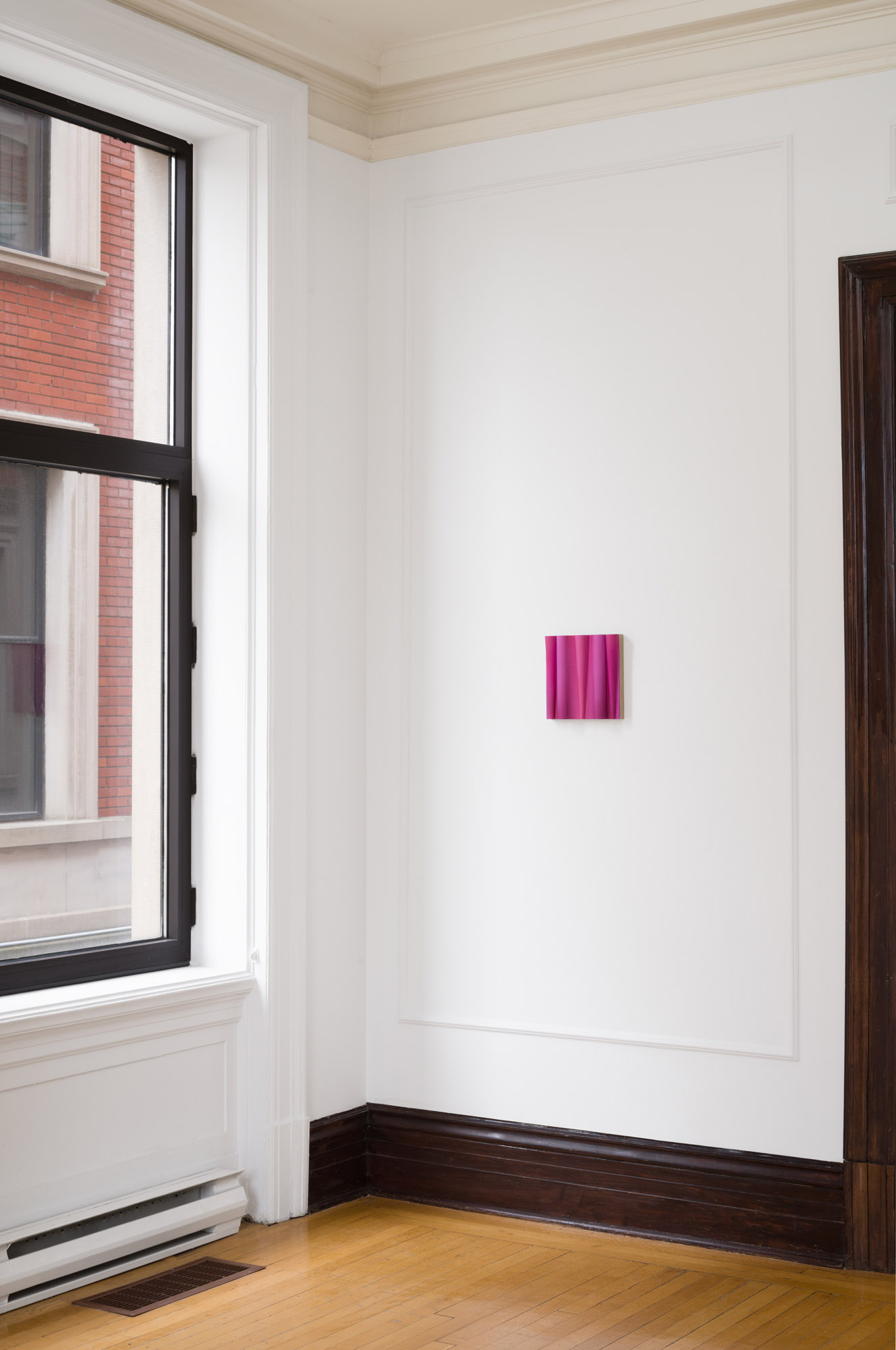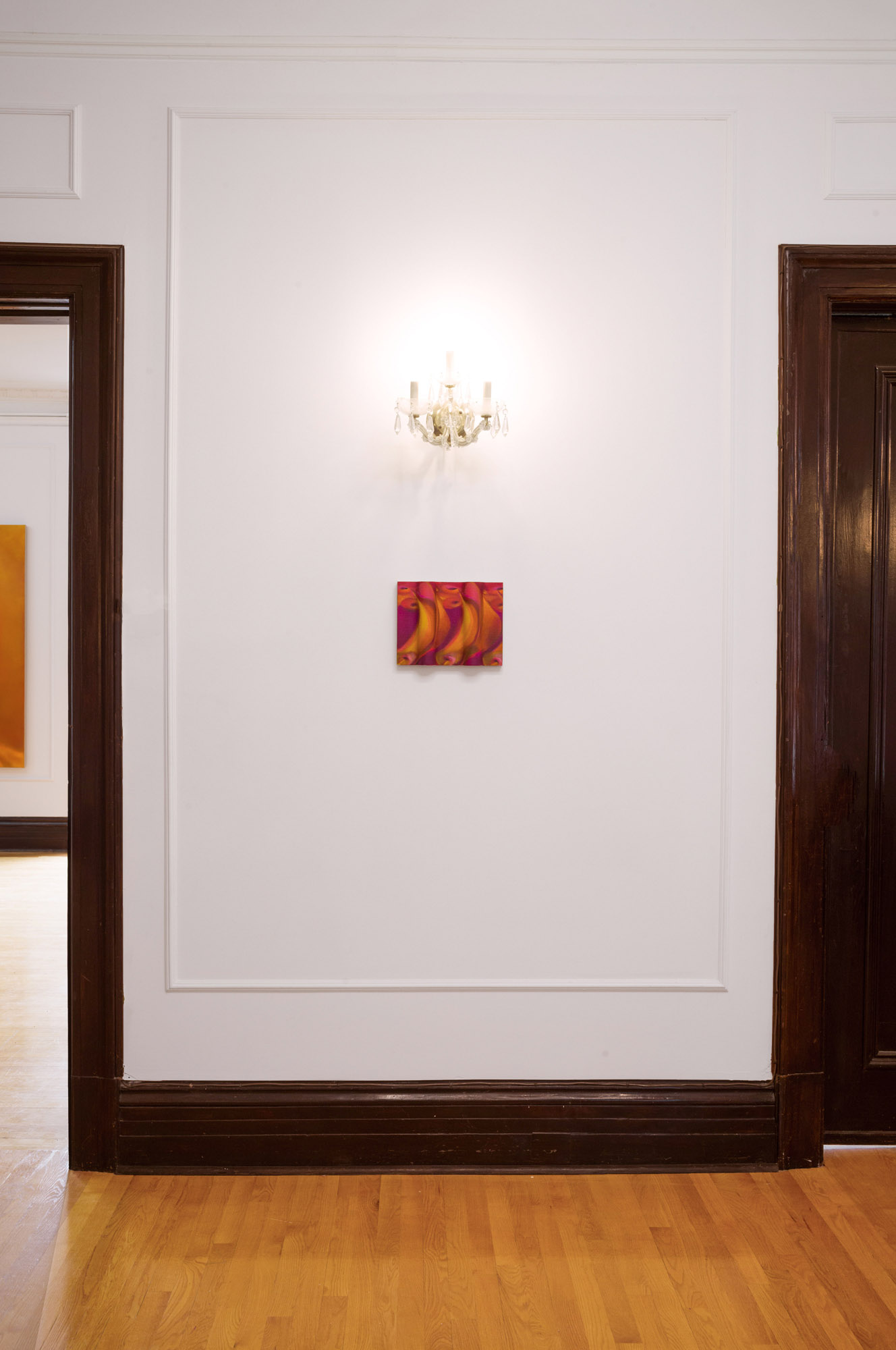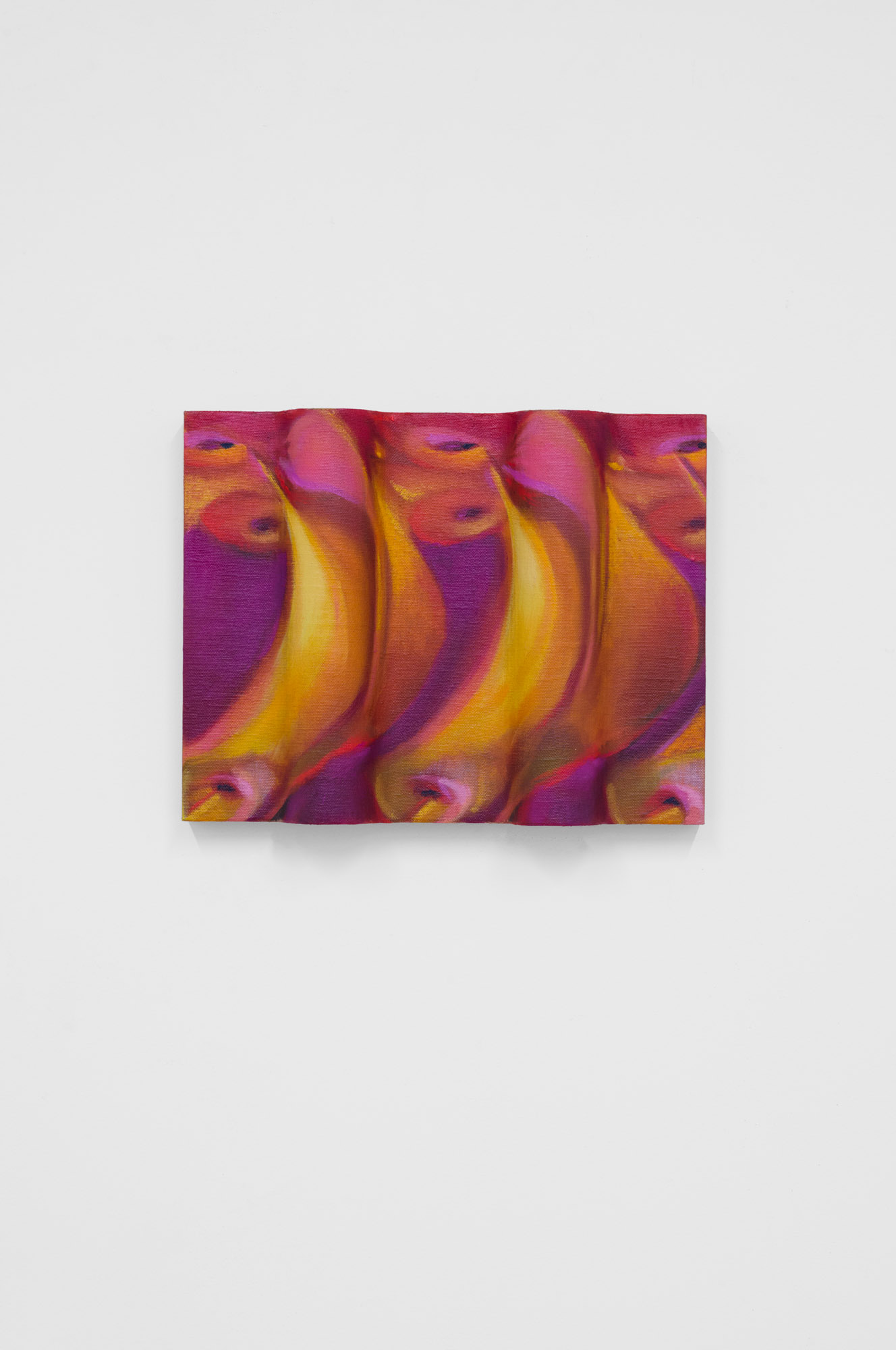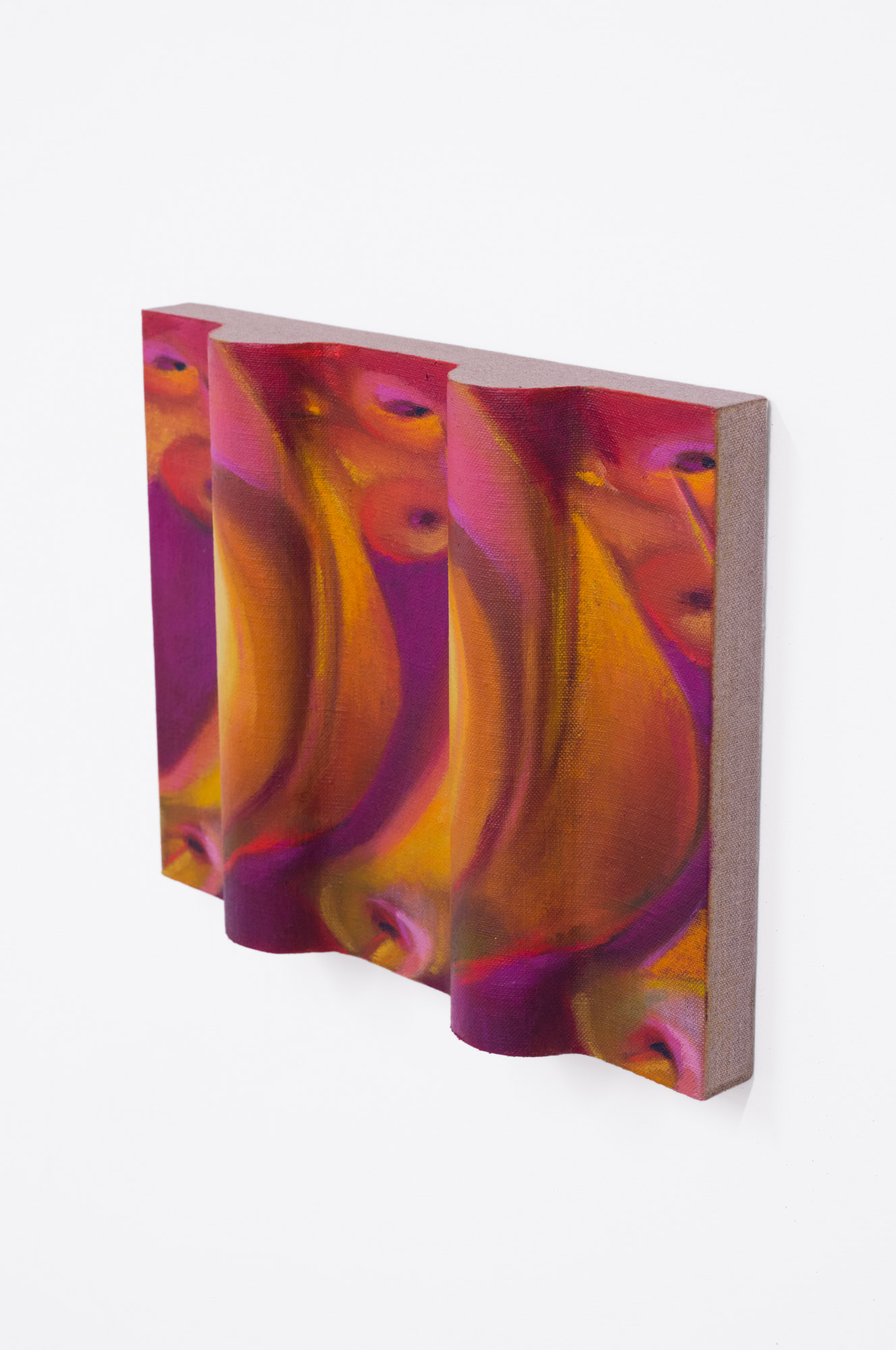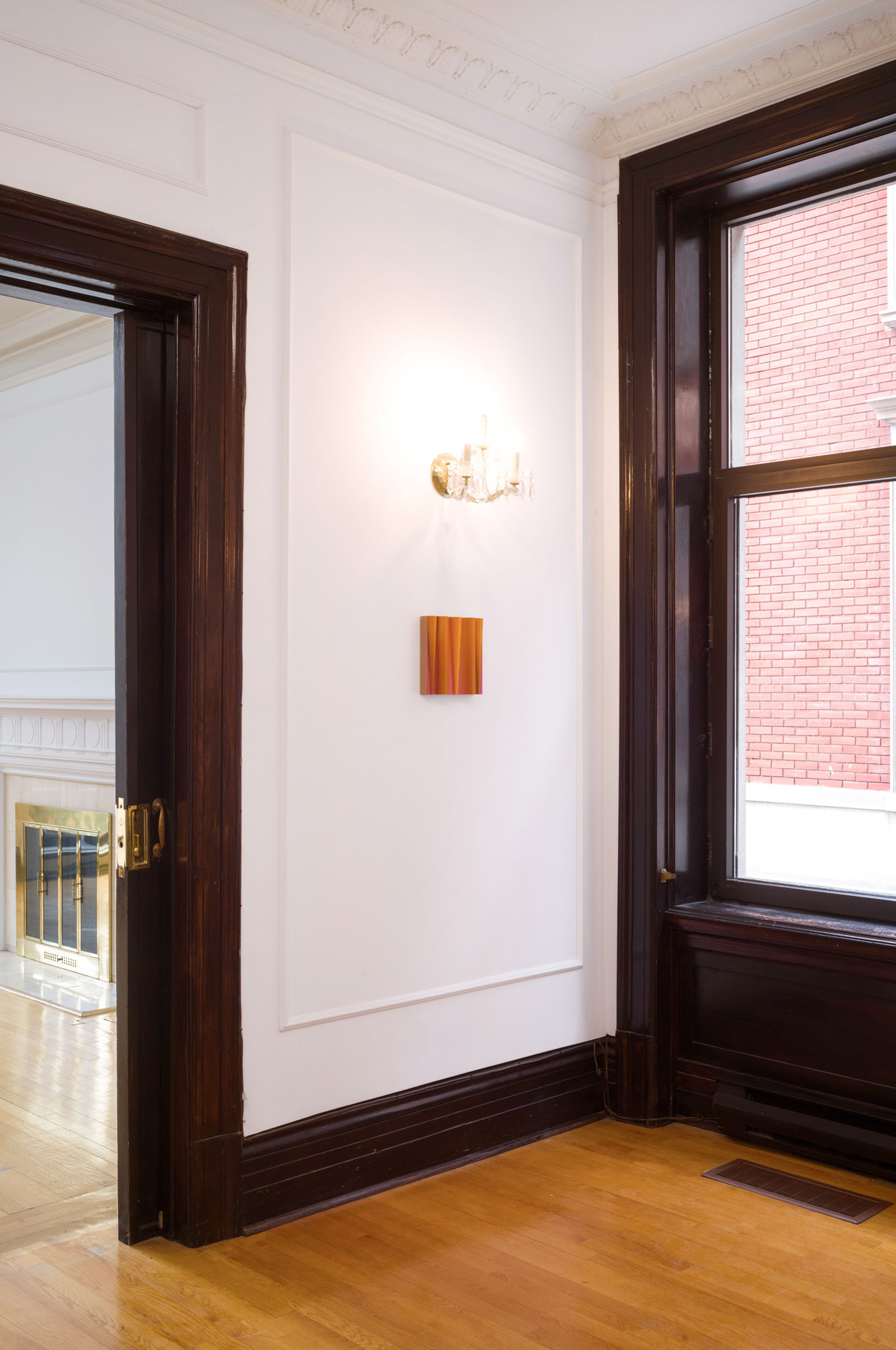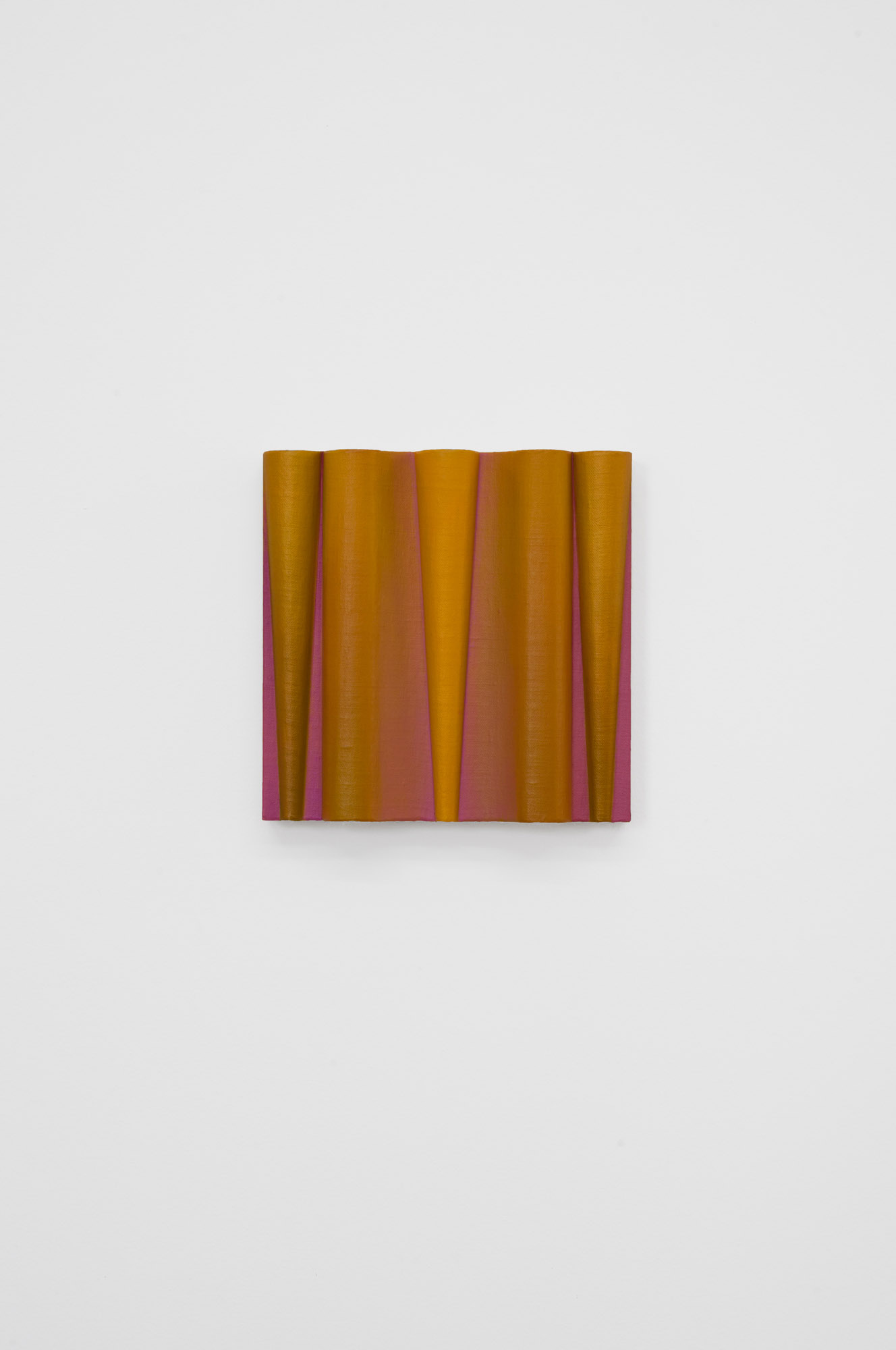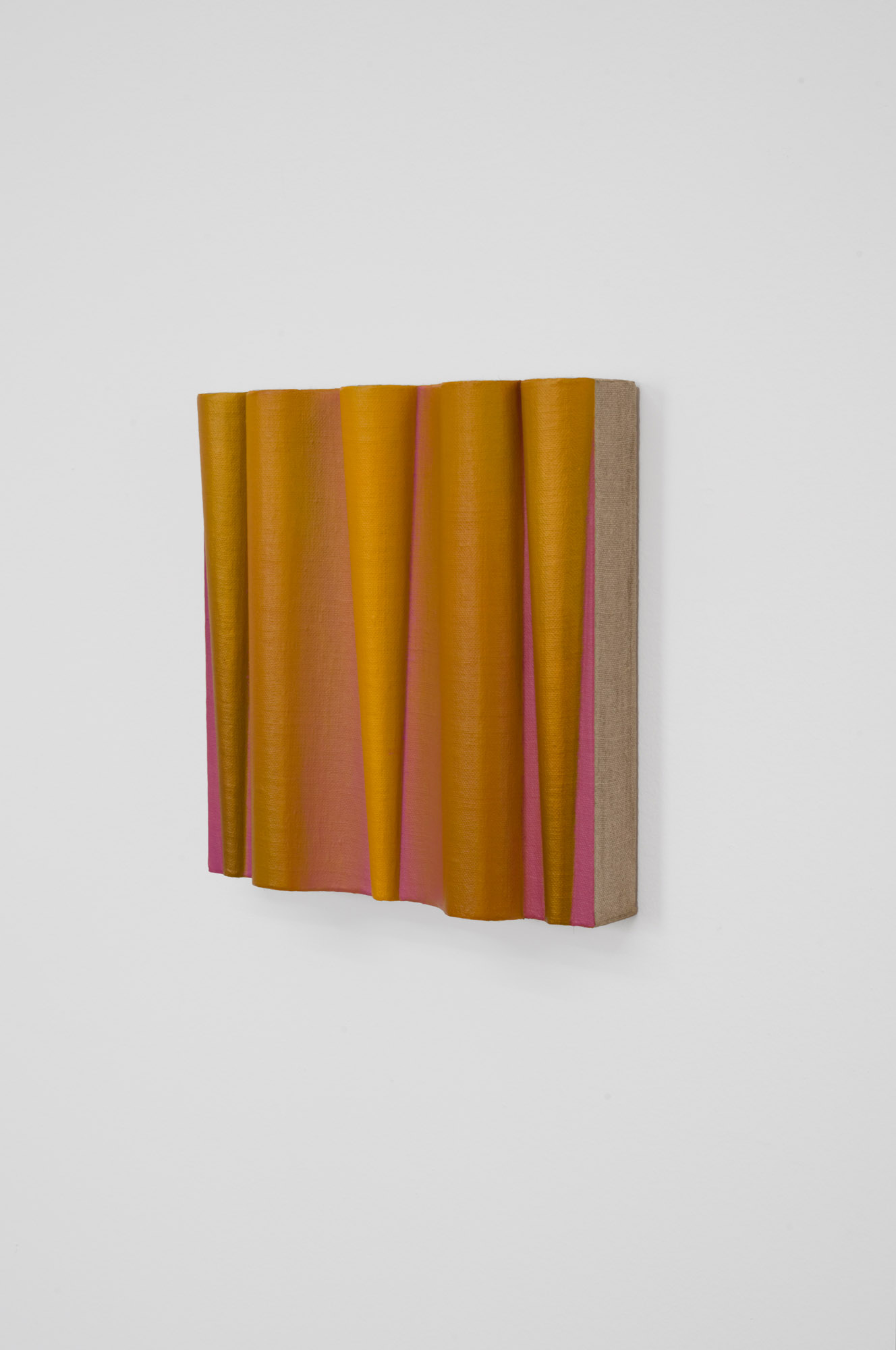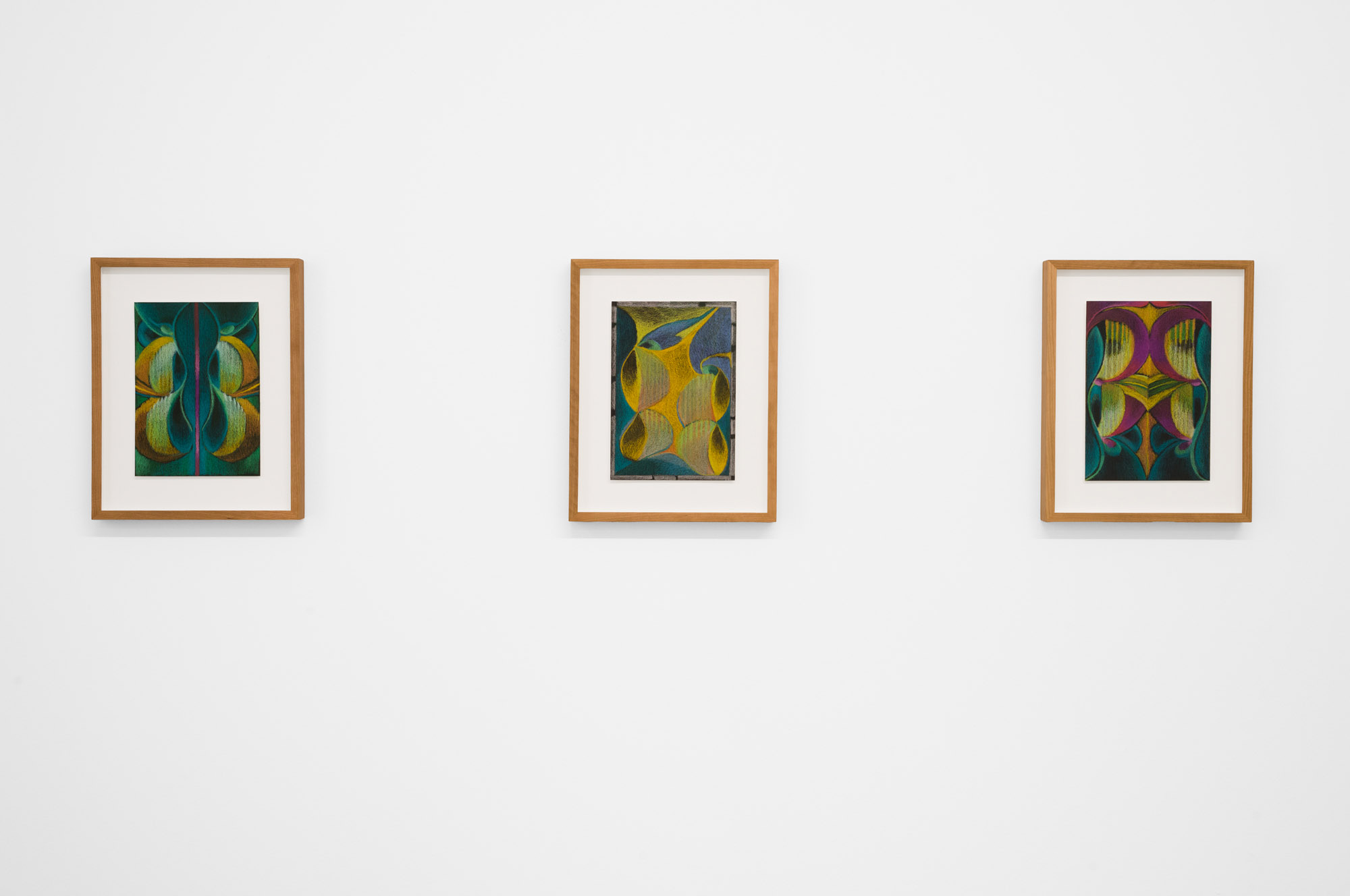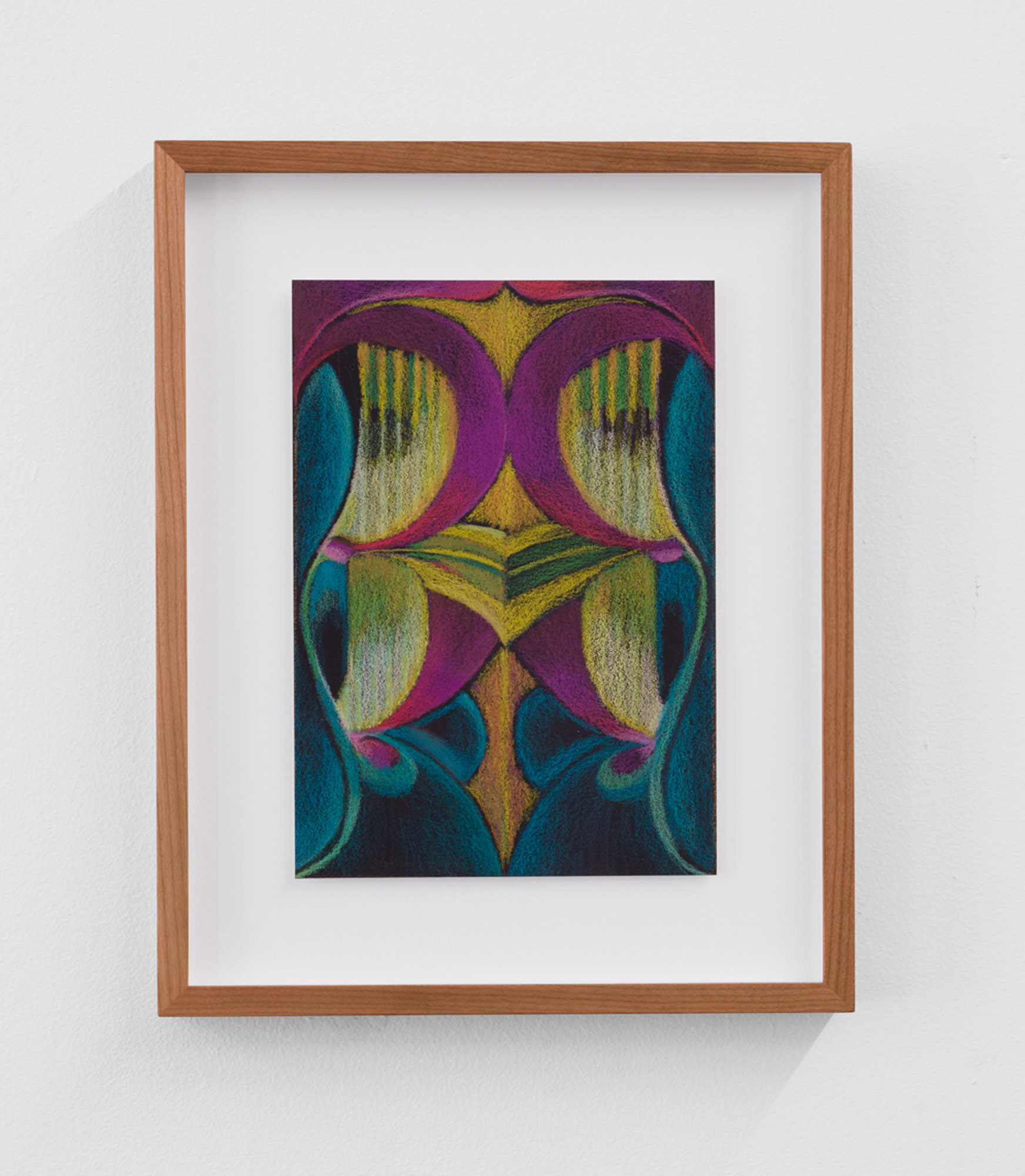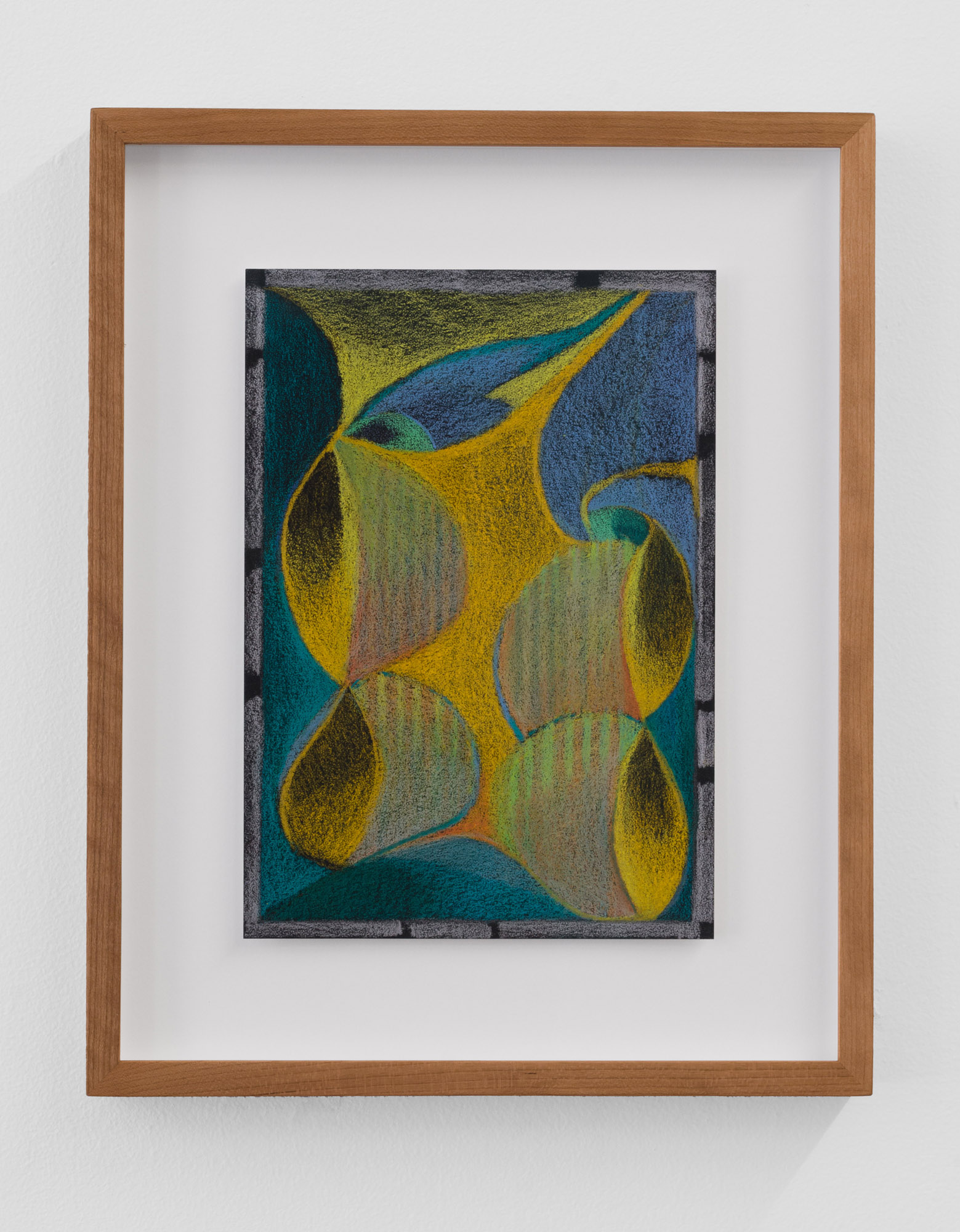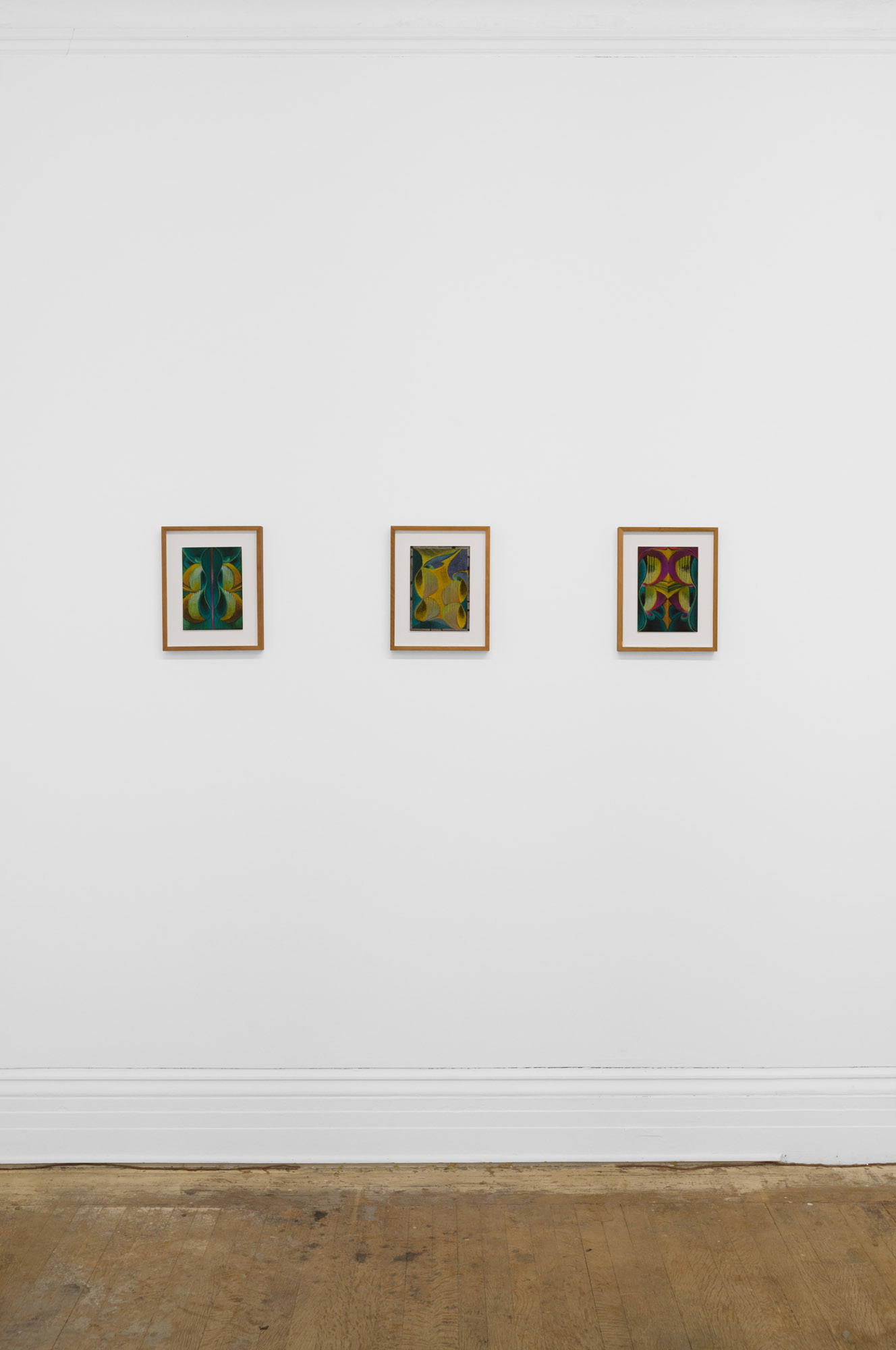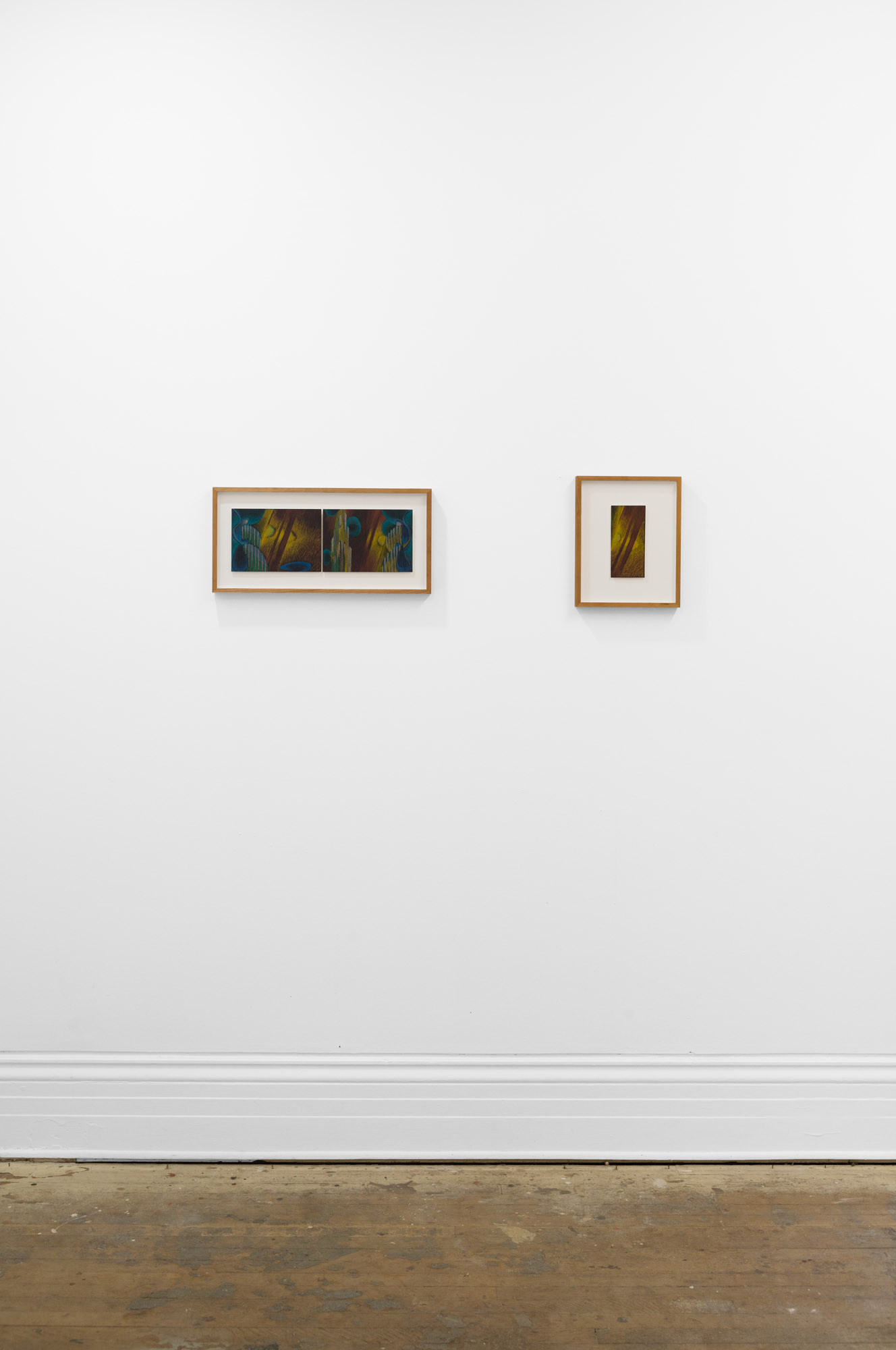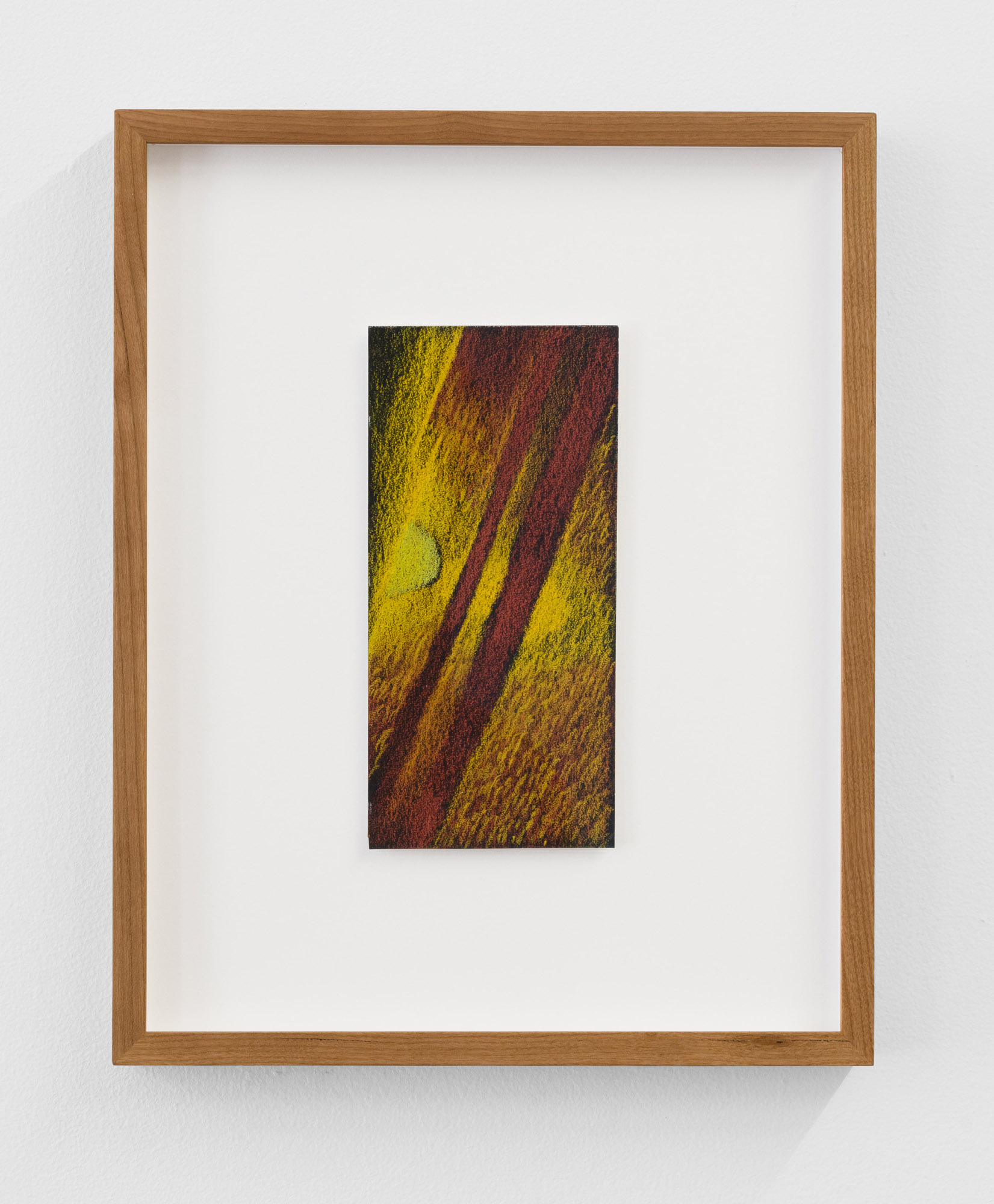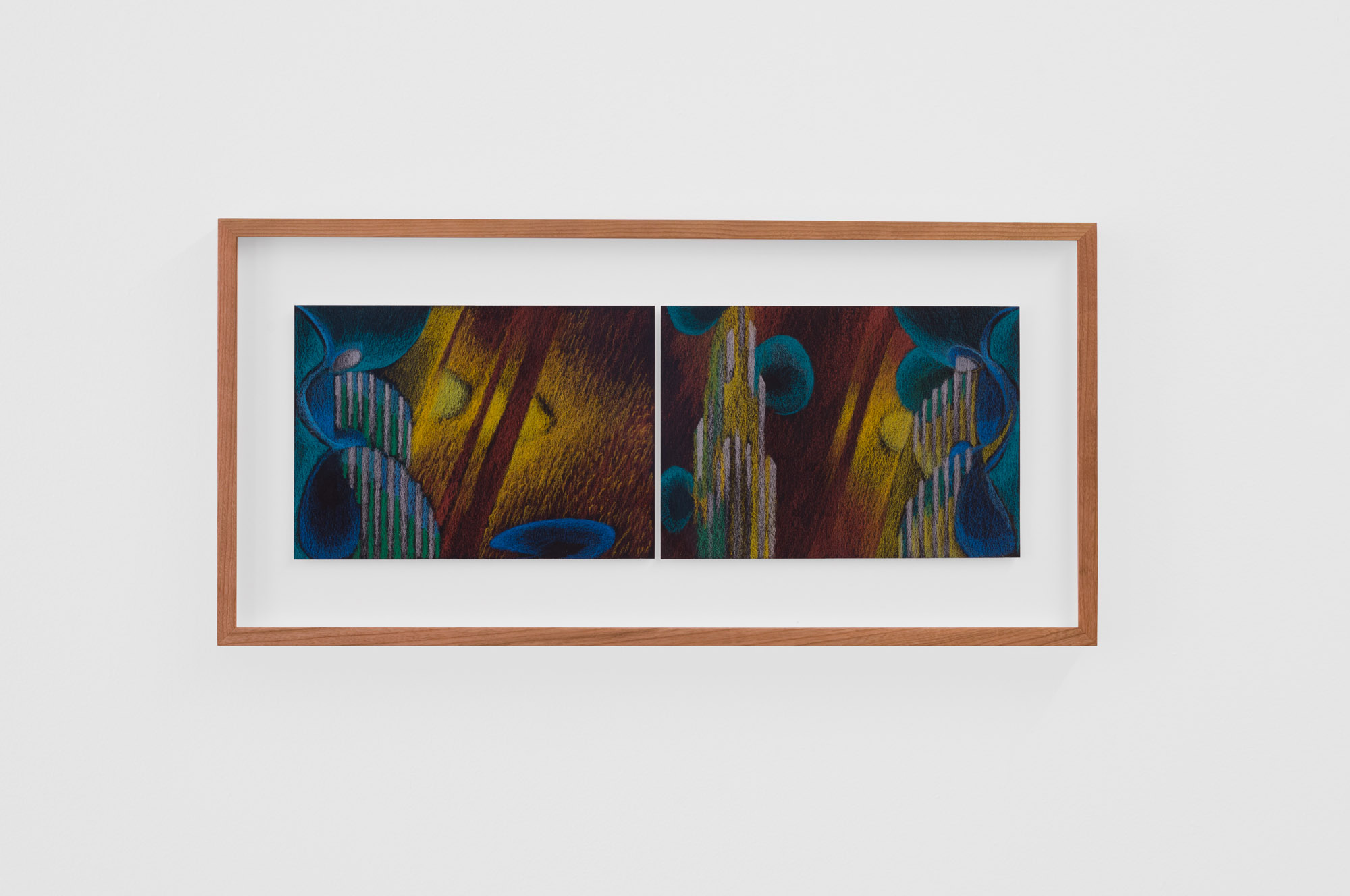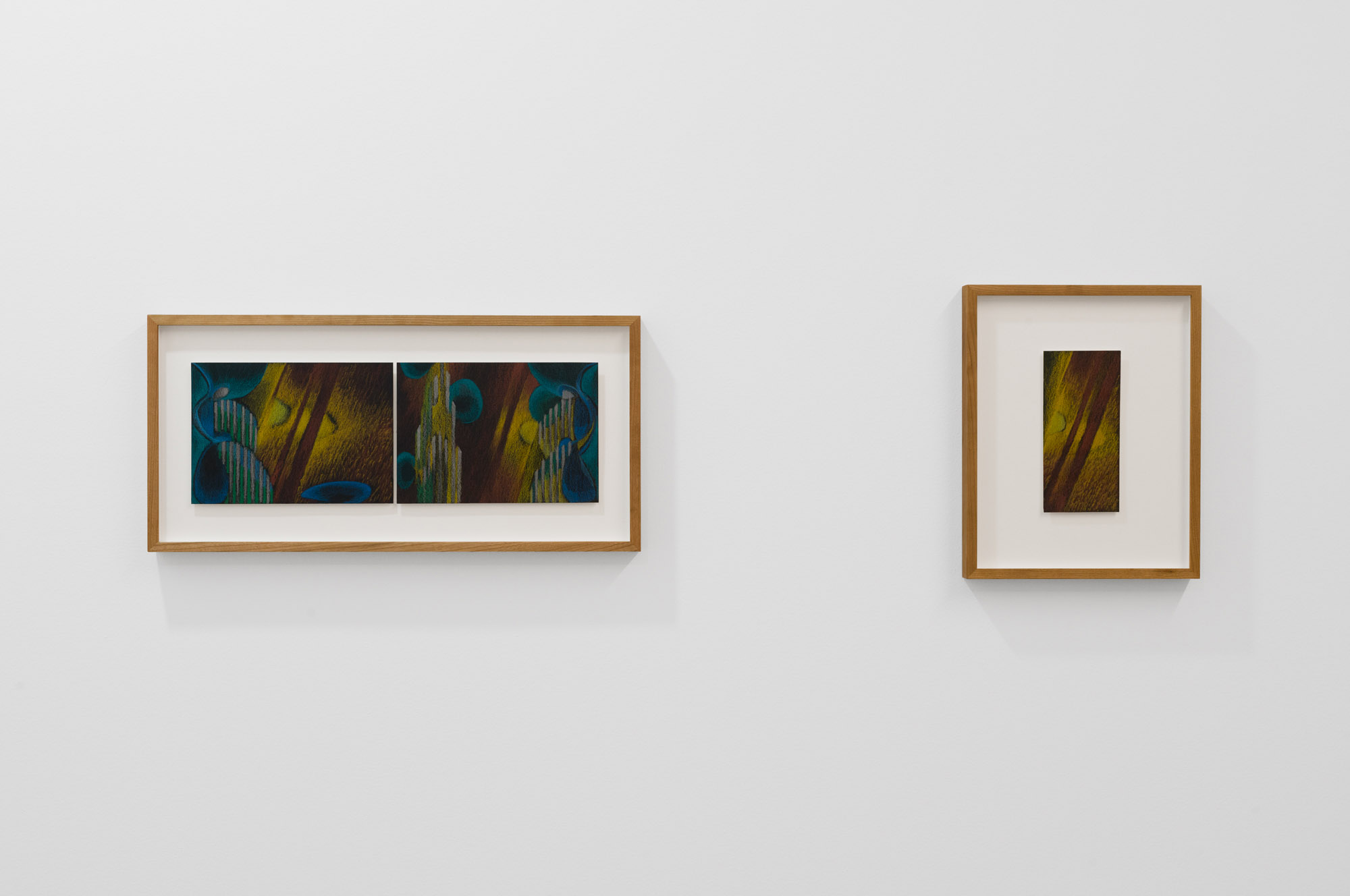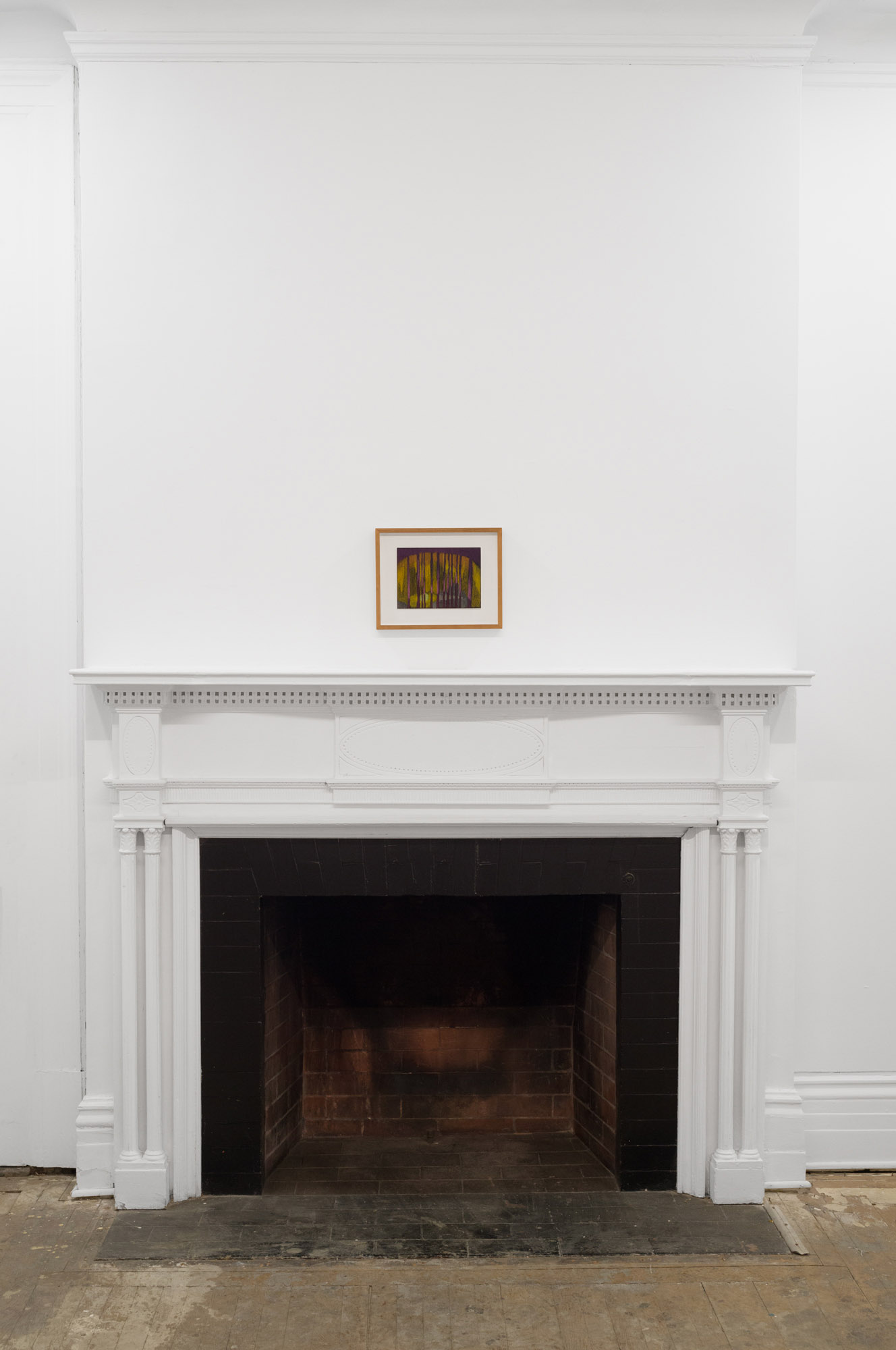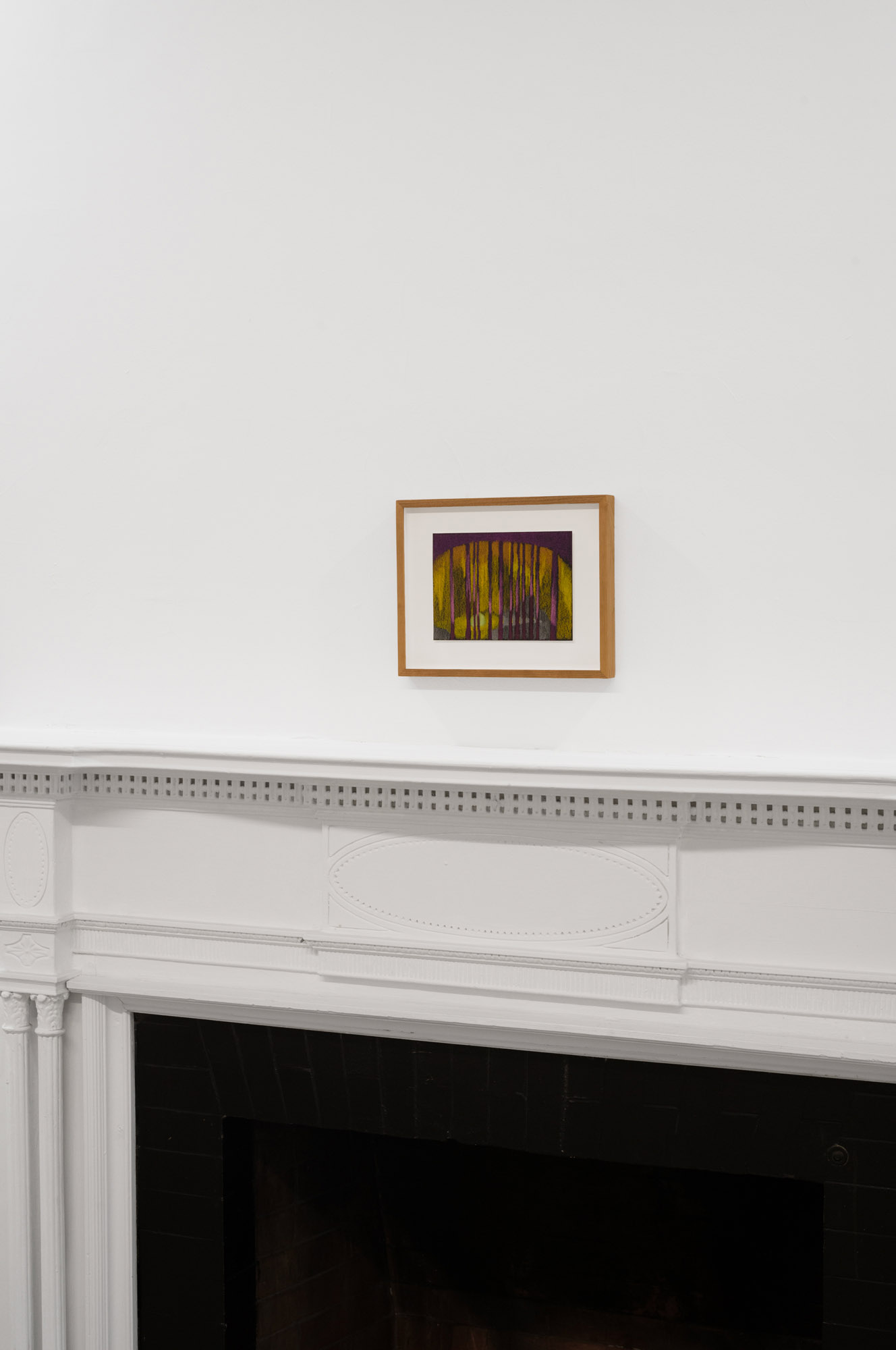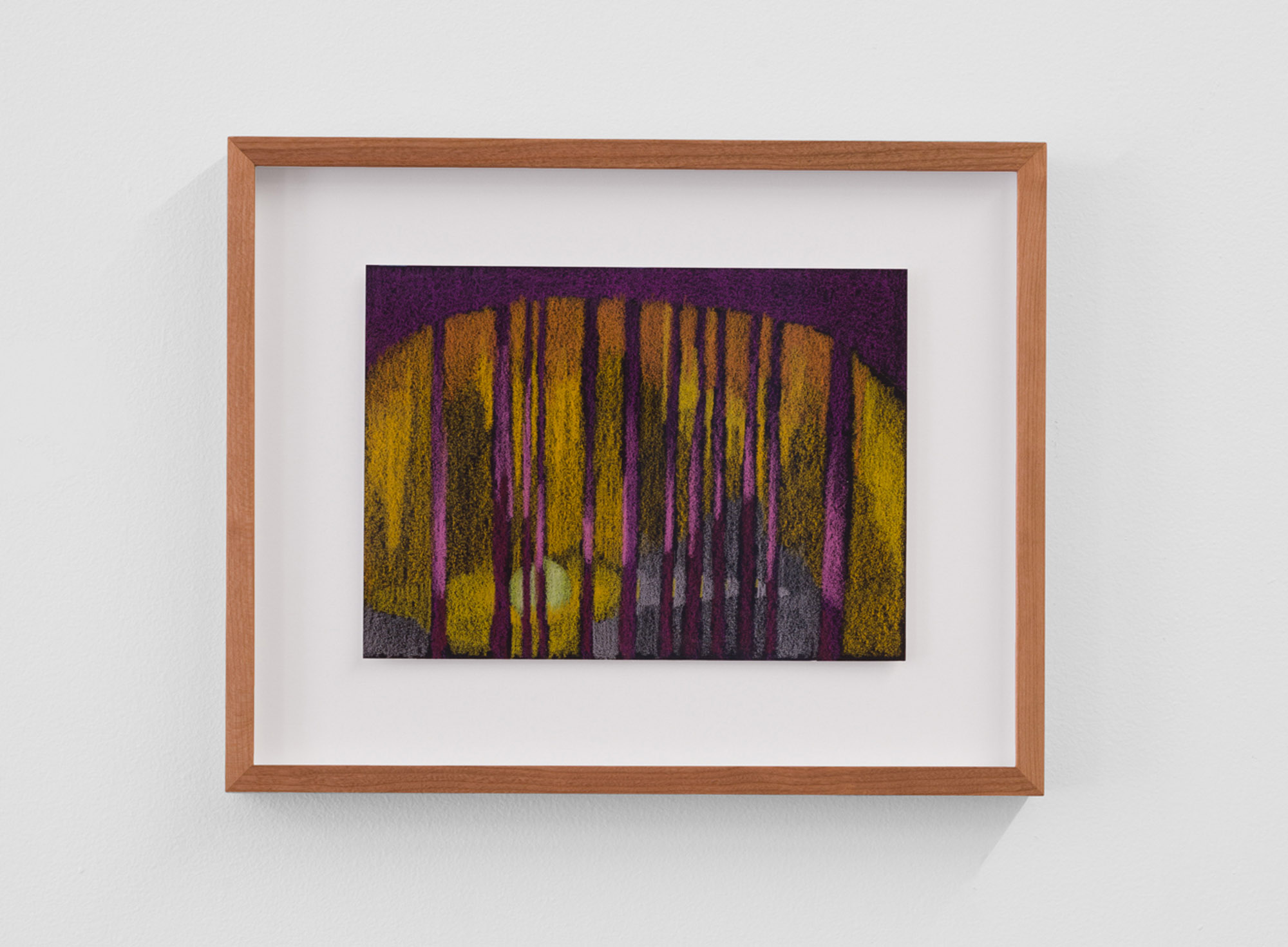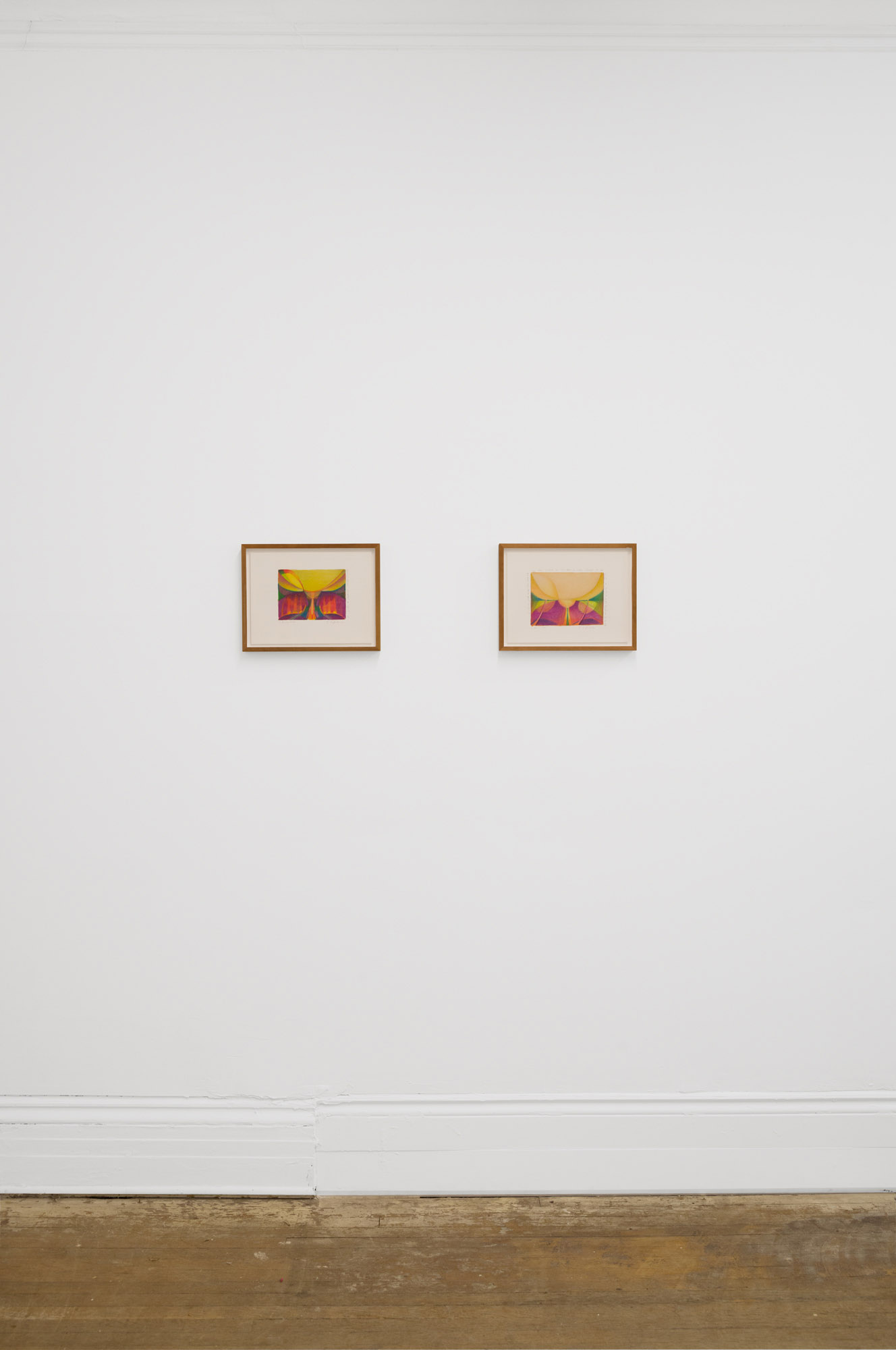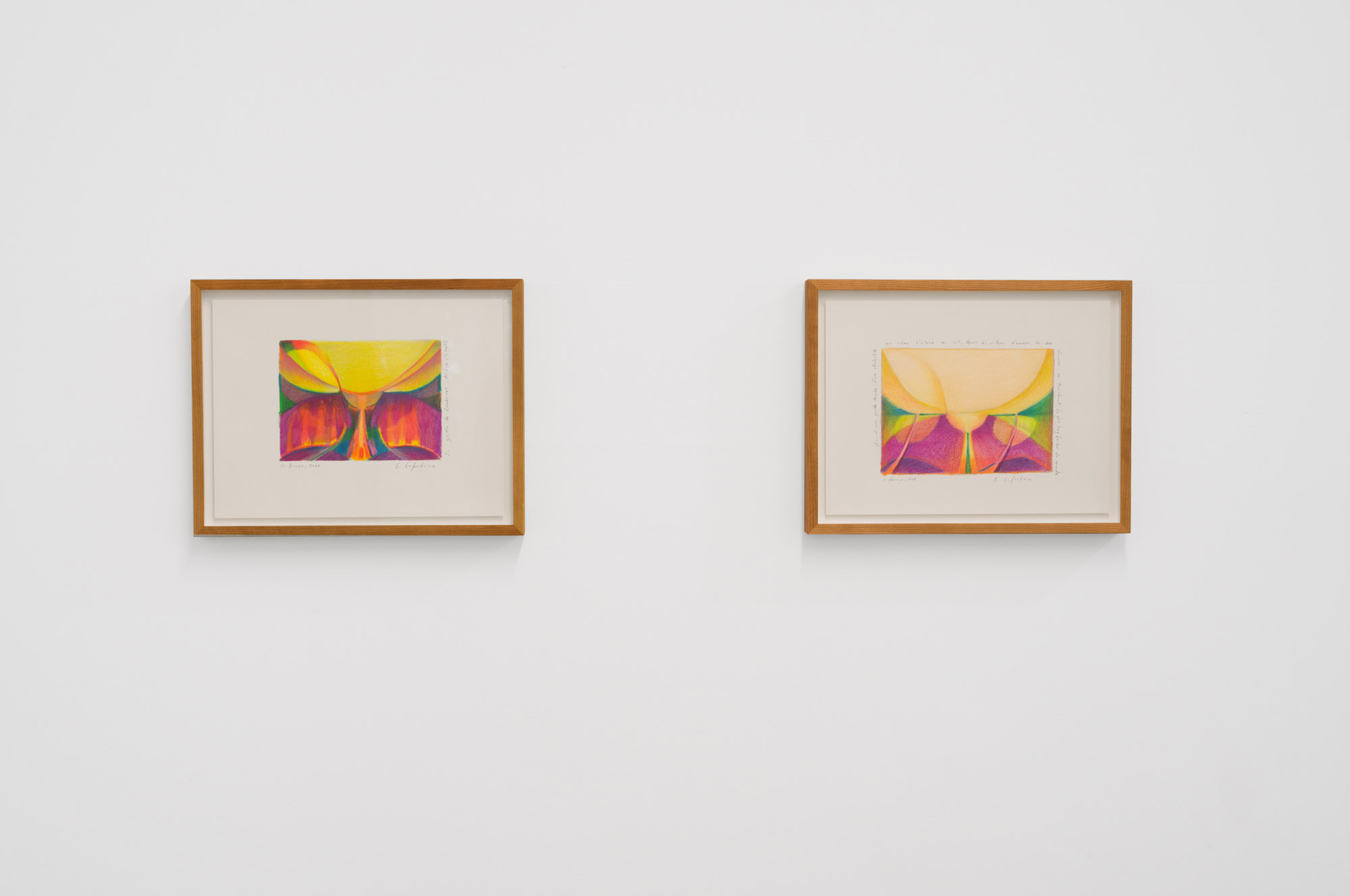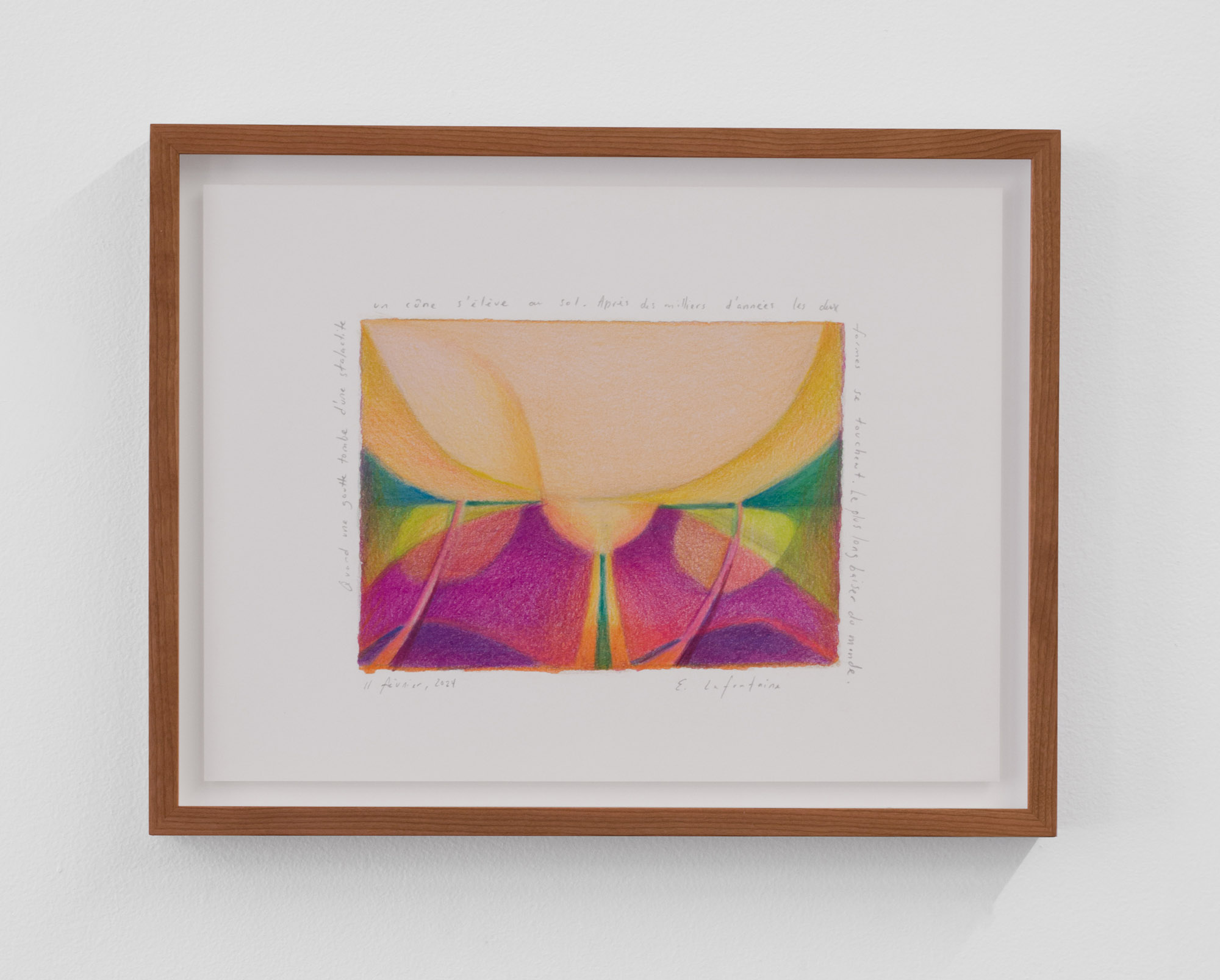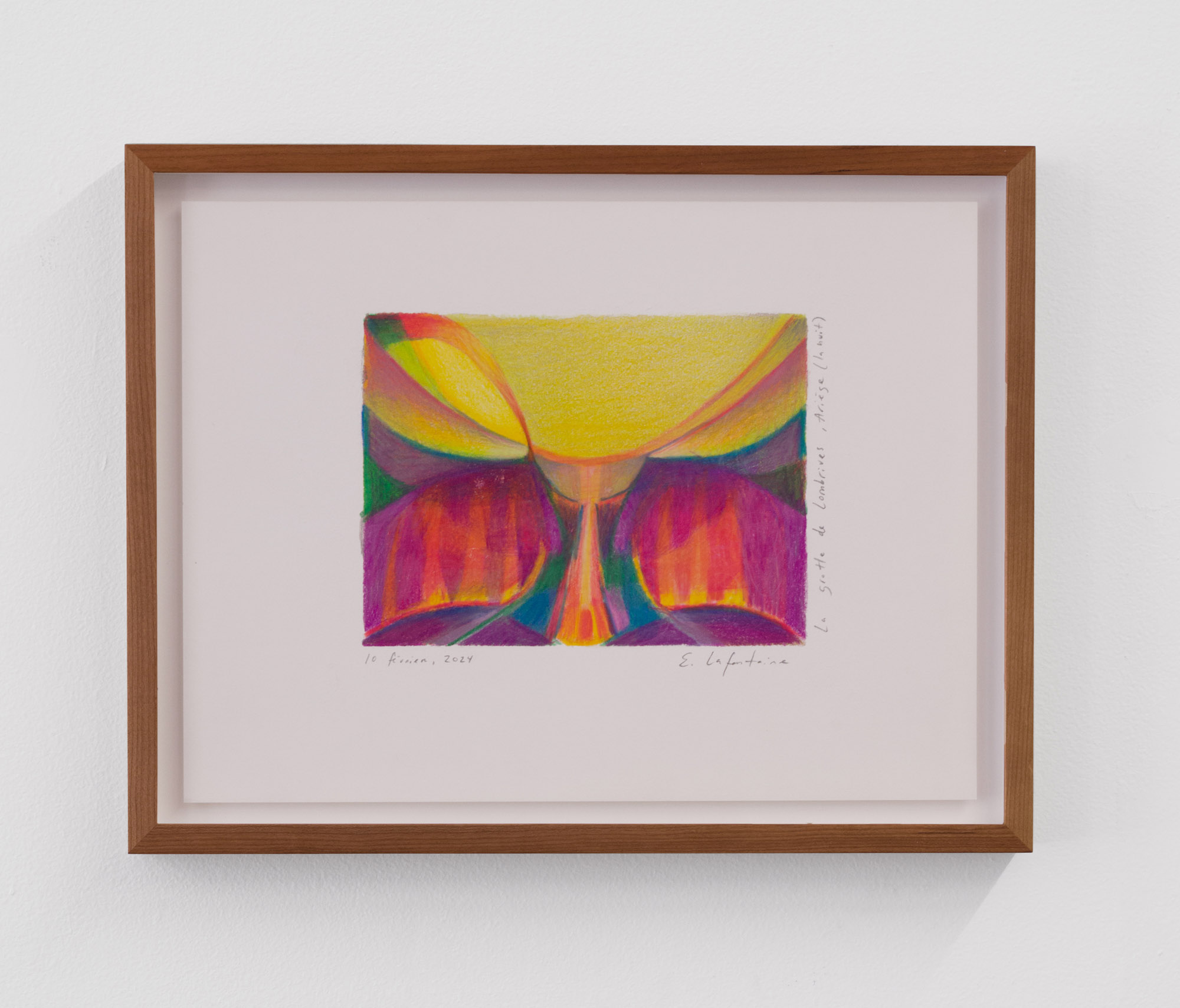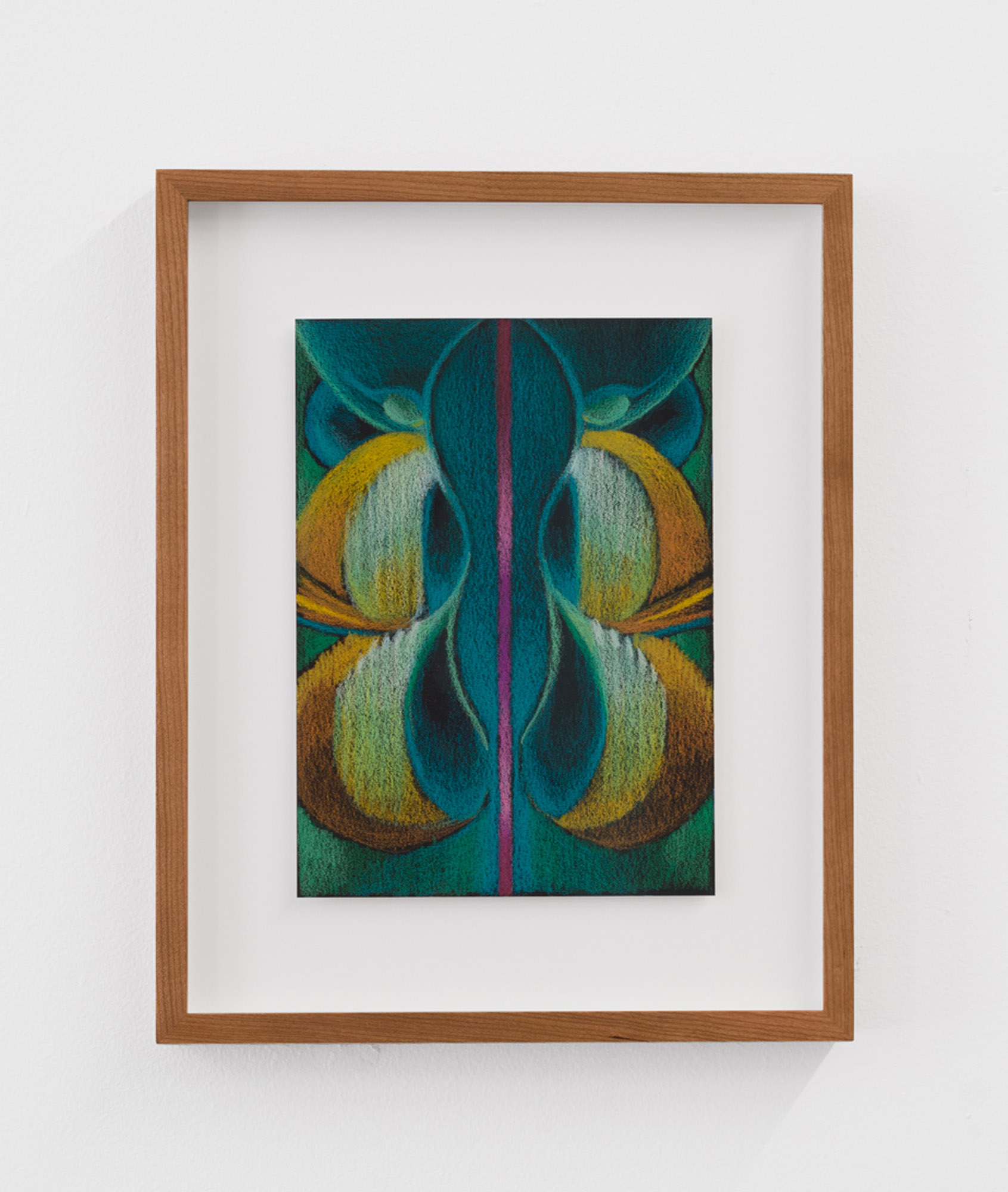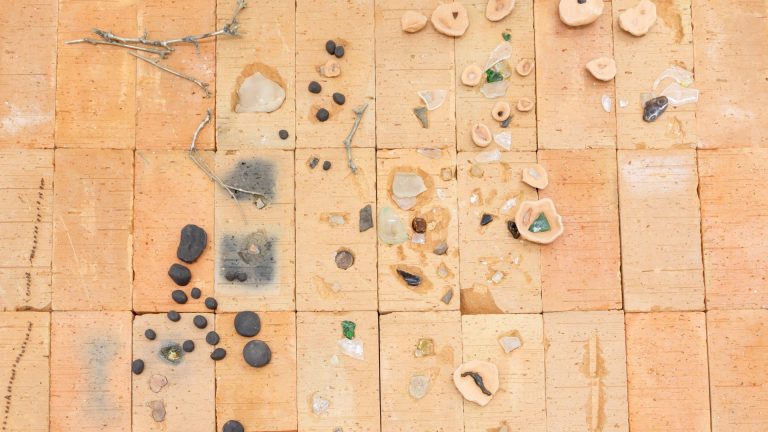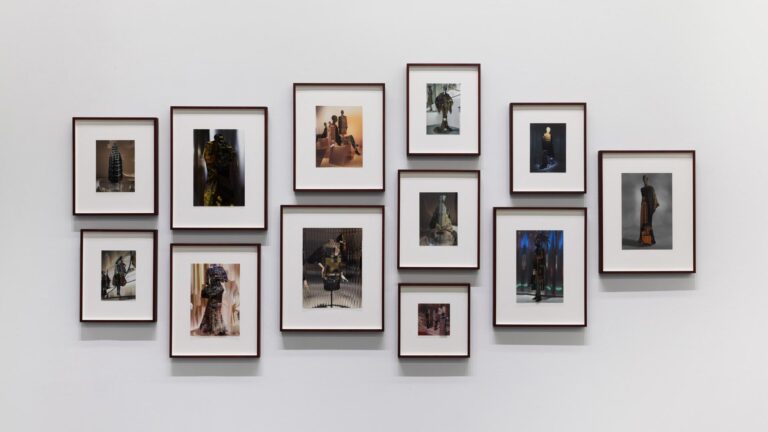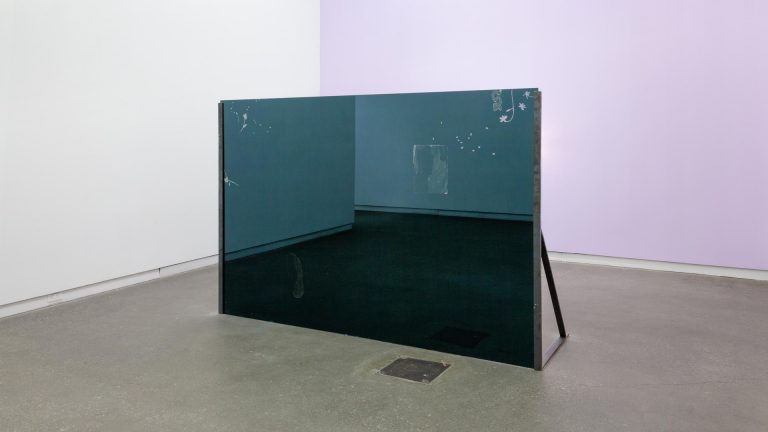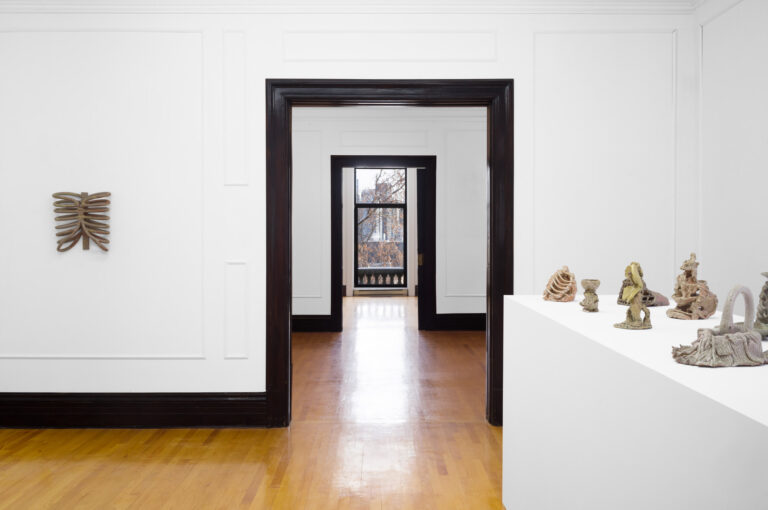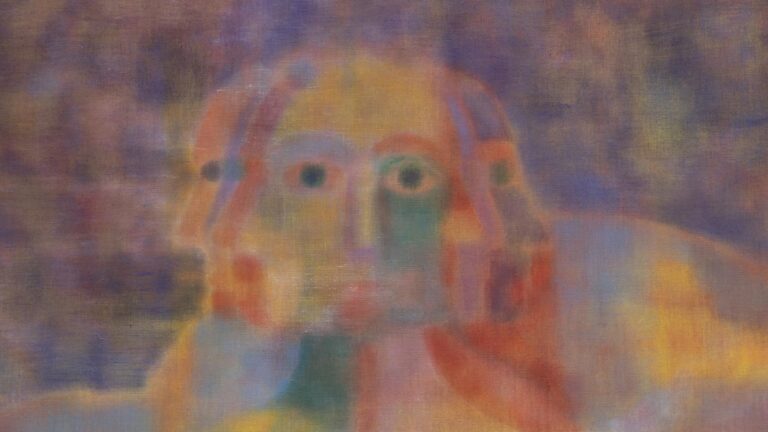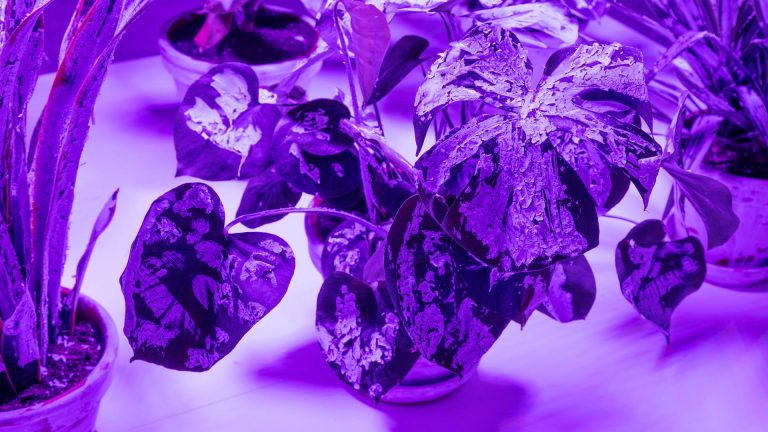Artist: Élise Lafontaine
Exhibition title: Lombrives
Venue: Pangée, Montreal, Canada
Date: May 11 – June 15, 2024
Photography: all images copyright and courtesy of the artist and Pangée, Montreal
In 2018, Elise Lafontaine travelled to Lombrives Cave in the Pyrenees of France. Spending the night in the depths of the cave system, she relied on the faint light of candles and flashlights to illuminate the surrounding cavern. Within it, she experienced heightened perceptions, her senses acutely aware yet simultaneously deprived by the darkness. This interplay of heightened sensory awareness and deprivation of stimuli triggered a significant shift in her artistic practice, which the eponymous exhibition Lombrives at Pangée is dedicated to.
The golden hues in paintings like La Cathédrale invoke the flickering flames that reverberate on the towering walls of the cave. Divided by a central axis, the work bears almost mirrored parts, yet they are subtly different, like the reverberation of an echo. Pearls of light anchor the canvas, while shimmering ribbons intertwine to cast an otherworldly glow. La Cathédrale exudes tangible energy and warmth, with the image seemingly in motion, rotating on the central axis reminiscent of the helix of DNA. This extends to Lafontaine’s brushstrokes, which are permeable and layered, mimicking the translucent sheen of human skin.
Through this new body of work, Lafontaine continues her exploration and conflation of scale. Her paintings echo this fusion, where towering architectural forms reflect the delicate intricacies of microscopic cellular membranes. Her ambition is to disorient and disrupt the stability of her typically symmetrical and geometric paintings, explaining: “I wanted the form to reflect the circulation of sound within our bodies.” This internal reverberation is deeply ingrained in her compositions, and inspired by her physical experience deep within the cave. Surrounded by profound darkness, she described the sensation of losing the sense of where her body began and ended. In her paintings, bodies appear to expand and merge with the very essence of the cave itself.
Lafontaine often speaks of the structures and forms in her work in relation to the imagery of the female body. The curves of her lines and the solidity of her arrangements bring to mind the skeletal architecture of bodies. Rib cages, depicted as towering forms, appear to defy gravity, their sheer magnitude suggesting a precarious balance that teeters on the brink of collapse. This is evident in works like La Galerie Blanche, where the subterranean columns blur the line between the imaginary and the real, where stalactites and stalagmites are superimposed onto golden vaulted ceilings. The shapes in this artwork were influenced by a photograph she captured of herself at Lombrives, in which her figure seamlessly integrates with the century-old stalactite formations.
The rugged walls and organic contours of the Lombrives sparked Lafontaine’s innovation to clue her linen canvases over volumetric wooden substructures, a technique called ‘Marouflage’ in French. In pieces such as Small Concretions, her skeletal and pillar-like forms exude a distinct aura and register like an echo—a sonic resonance within the spatial environment. The artwork has a rich sculptural surface that is adorned with vibrant reds and pinks. But amid this rhythmic flow, there’s a slight sense of disorientation, where lines simultaneously merge, blur, and fade. This induced vertigo captures a sense of vastness and sacredness. In one particular piece, La Carène, calming dark blue hues draw viewers in, revealing remnants of an older painting that are subtly woven in, offering glimpses into another speculative world. A radiant pink warmth emanates from the central line, contrasting with the surrounding cool blues and deep purples, as if the painting invited us to journey through its portal. This sense of movement is also palpable within Lafontaine’s meticulous consideration of the layout of her exhibitions, in which she creates rhythm and pauses. She incorporates small canvases with rounded sides, which spark delicate bursts of light within the space. The dark blues, greens, and purples found in other works of the exhibition evoke the tranquillity that Lafontaine experienced within the cave’s depths, where she ultimately transcended its darkness, danger, and instability. Within this context, the cave becomes a sanctuary, akin to a womb or earthly placenta—a space for contemplation and creation.
Text by Marie-Charlotte Carrier

